2025 Research Investment
LLSC's Operating Grants, in partnership with aligned organizations, provide funding to research that may lead to a significant change in the understanding, diagnosis, or treatment of leukemias, lymphomas, myeloma, myelodysplastic syndromes, and myeloproliferative neoplasms.

Tumor-microenvironment ecosystem and treatment resistance in ALCL
Lymphoma, treatment resistance, recurrence, T-cell lymphoma, tumour cells, immune cells
Anaplastic large cell lymphoma (ALCL) is one of the most common aggressive subtypes of T-cell lymphoma. Newer treatments that specifically target markers on cancer cells, like ALK inhibitors and CD30-targeting antibodies, have helped improve survival rates for ALCL patients in recent years. However, outcomes for people who experience cancer recurrence after treatment are not as favourable. Research into developing novel treatments is a priority to improve outcomes.
In this project, we propose to study tumour cells and their interaction with normal immune cells that surround them (known as the tumour microenvironment). We will use new technology to study tissue samples from more than 50 patients. This technology allows us to understand the genetic material of cancer cells on an individual cell level, and the complex relationship between individual cells, including lymphoma cells and immune cells. This research will improve our understanding of ALCL and potentially lead to better treatment options.
This LLSC grant is funded in partnership with Cancer Research Society.

Mitigation of AML relapse through a novel immunotherapy
Acute leukemia, AML, relapse, vaccines, antibodies, immunotherapy
Acute Myeloid Leukemia (AML) is a type of blood cancer where relapse after remission remains a major challenge, significantly limiting patient survival. Current chemotherapy treatments are effective at reducing the disease but often fail to eliminate all cancerous cells, allowing resistant leukemia cells to survive and cause the disease to return.
To address this problem, we are developing mRNA vaccines designed to produce highly specific antibodies that target and destroy these lingering leukemia cells. These vaccines aim to provide long-term protection by maintaining disease remission for months or even years, offering new hope for AML patients.
This LLSC grant is funded in partnership with Cancer Research Society.

Development of novel immune-targeted therapies in multiple myeloma
CAR T, myeloma, immunotherapy, relapse
The application of immune-based therapies is rapidly transforming the outcomes of patients with liquid tumours such as multiple myeloma, a bone marrow cancer of plasma cells. Targeted immune therapies, such as bispecific T-cell antibodies and chimeric antigen receptor T-cells (CAR T), can invigorate the patient’s own immune system to better target the myeloma cancer cells. While these therapies are effective in inducing remissions, they fail to provide a cure as most patients invariably relapse.
In our initial studies, we demonstrated that myeloma tumour cells block the effect of immunotherapy by mutating target molecules present on the cell surface. The goal of this project is to identify and develop novel target therapies that can be used as salvage therapies for patients relapsing on currently approved targeted immunotherapy.
This LLSC grant is funded in partnership with Myeloma Canada.

Targeting CD59 as a novel therapeutic approach against AML
Acute leukemia, AML treatment-resistant, targeted therapy
Our lab is studying a new way to treat a dangerous blood cancer called acute myeloid leukemia (AML). We have found a protein called CD59 that sits on the surface of cancer cells and helps cancer cells survive and grow, making patients sicker. We developed a drug-like molecule that can stick to and destroy the CD59 protein, which makes the cancer cells weaker and easier to kill. This will be tested in the lab using cell samples from many different AML patients to figure out how it works with existing cancer drugs. This research could lead to a new treatment option for AML patients who do not respond well to current therapies.
This LLSC grant is funded in partnership with Cancer Research Society.

Targeting PCSK7 in therapeutic T-cells
CAR T, relapse, leukemias, lymphomas, immune cells, T-cells
Manipulating a patient’s own immune cells in the laboratory to better equip them to fight cancer can be remarkably effective to treat many kinds of blood cancers. In the laboratory, patient immune cells (or the immune cells of a donor) can be transformed by the insertion of genetic material that gives them improved ability to fight cancer cells. The best example of such cells are CAR T-cells that are currently used in certain types of lymphoma and leukemia. T-cells are a type of immune cell that can proliferate and persist for a long time after their injection in the patient.
Unfortunately, as a "living drug", T-cells can become tired and ineffective when they are repeatedly stimulated. The exhausted T-cells can end up blocking the anti-cancer response which can lead to relapse. We found that by suppressing a single protein called PCSK7 in T-cells, we can revive the exhausted T-cells and restore their anti-cancer properties. We aim to remove PCSK7 from CAR T-cells and other anti-leukemia/lymphoma T-cells so they would remain effective.
This LLSC grant is funded in partnership with Cancer Research Society.

Spatial and immunologic profiling of exhausted T-cells in post-HSCT relapse
Stem cell transplant, relapse, detection, AML, acute myeloid leukemia, T-cells
Stem cell transplants use healthy donor cells to replace diseased blood-forming cells in patients with leukemia. While this can be an effective treatment for acute myeloid leukemia, many patients still face relapse, which is often fatal within two years. Relapse after a transplant is different from relapse after regular chemotherapy and is often caused by “immune escape.” This happens when leukemia avoids being attacked by the donor’s immune system, either by hiding or weakening the immune cells (T-cells) that fight it. These T-cells can become “exhausted,” losing their ability to control the leukemia.
This study will explore how T-cell exhaustion and immune escape contribute to relapse after transplantation in acute myeloid leukemia, aiming to develop a tool to monitor and predict relapse early. We will study blood and bone marrow samples from patients who relapsed after a transplant, using advanced methods of detection and imaging. The goal is to create a monitoring tool to detect relapse risk earlier and improve strategies to keep patients leukemia-free for longer. This could lead to better post-transplant care and new ways to prevent relapse.
This LLSC grant is funded in partnership with Cancer Research Society.

Redox metabolism as a target in ETP-ALL
Early T-cell precursor ALL, T-cell acute lymphoblastic leukemia, early relapse, treatment resistance
T-cell acute lymphoblastic leukemia (T-ALL) is an aggressive type of blood cell cancer, affecting both children and adults each year in Canada. A distinct subtype of ALL, called Early T-cell Precursor ALL (ETP-ALL), is associated with early relapse and poor prognosis. ETP-ALLs do not respond to early-stage chemotherapy, and there are currently few approved therapies for ETP-ALL patients who relapse.
The metabolism of cancer cells is complex and distinct from normal cells. Redox metabolism is like a cell's internal energy and balance system, using molecules like reactive oxygen species (ROS) to keep things running smoothly. In ETP-ALL, this system goes haywire: allowing cancer cells to grow, mutate and become more resistant to treatment. Current treatment for T-ALL includes several molecules which inhibit key metabolic pathways necessary for leukemia cell survival and growth – pathways in T-ALL but not in ETP-ALL.
This project will investigate the metabolic pathways altered in ETP-ALL and use innovative tools to identify druggable targets to inhibit these pathways. Our study will shed new light on the metabolism of ETP-ALL and assess the effects of new therapeutic agents on the metabolism of this high-risk leukemia and its potential to kill these cells.
This LLSC grant is funded in partnership with Cancer Research Society.

Targeting the untargetable - Gene editing as novel therapy for lymphomas
B-cell lymphoma, targeted therapy, immune cells, gene editing
B-cell lymphomas are a type of blood cancer originating from the B-cells of our immune system. B-cells can quickly alter their DNA to fight infections and produce antibodies. These DNA changes can also lead to genetic errors that cause lymphoma. Current therapies such as chemotherapy target the consequences of these genetic changes but do not address the root cause – the mutated DNA in tumor cells.
What if we could directly repair faulty DNA that drives cancer? CRISPR-Cas9, a revolutionary “gene scissor,” has made it possible to precisely edit our DNA. However, gene editing (GE) remains unexplored as a direct cancer therapy because of two major challenges: 1) it is difficult to deliver GE tools specifically to tumour cells without affecting healthy ones and 2) the efficiency of repairing genes in tumour cells using current GE tools is still very low.
In this project, we aim to develop innovative tools to enable targeted and efficient GE tools in B-cell lymphomas. We hope to lay the groundwork for a new era of treatment that directly addresses the genetic source of cancer and provides innovative treatment strategies for patients with B-cell lymphoma in the future.
This LLSC grant is funded in partnership with AstraZeneca Canada.

Autophagy disruption potentiates immunotherapy response in multiple myeloma
Myeloma, drug resistance, immune cell, immunotherapy
Although multiple myeloma (MM) remains incurable due to the development of drug resistance, identifying new molecular vulnerabilities remains a promising strategy for improving disease management. After discovering the enzyme PIKfyve as a target in MM, we developed PIK001, a potent PIKfyve inhibitor. PIKfyve inhibition disrupts cellular processes and, surprisingly, increases the number of proteins on the cell that signals to our immune system to activate anti-tumour responses.
We will explore the molecular consequences of immune regulation in MM cells via PIKfyve inhibition. Next, we will determine whether inhibiting PIKfyve can be used together with relevant immunotherapies in myeloma cell lines and patient samples.
Lastly, we will evaluate the efficacy of PIKfyve inhibition in combination with bispecific antibodies, checkpoint inhibitors, and exciting new T-cell receptor therapies Collectively, this work aims to establish PIKfyve inhibition as a novel therapeutic option in MM that not only induces tumour cell death but also improves anti-tumour immunity, addressing key therapeutic challenges in MM and improving patient outcomes.

Evaluation of inflammatory biomarkers in T-cell acute lymphoblastic leukemia
T-ALL, treatment resistance, targeted therapy, leukemia cells, personalized therapy
T-cell acute lymphoblastic leukemia (T-ALL) is an aggressive blood cancer that responds poorly to standard chemotherapy for many patients. This often leads to disease progression, worse clinical outcomes, and unnecessary side effects from ineffective treatments. Our recent research showed that some T-ALL patients who have a biological response known as ‘inflammatory gene activation” and are resistant to conventional therapies, respond favourably to the drug, Venetoclax. Our goal is to improve how we identify and treat these patients.
We aim to identify proteins on leukemia cells (called biomarkers) that will help us to more accurately diagnose the particular type of T-ALL, and therefore help determine the most effective treatment for the individual patient. By focusing on personalized therapy, we aim to improve outcomes for T-ALL patients, reduce harmful side effects, and make treatments more effective.
This LLSC grant is funded in partnership with AstraZeneca Canada.

Targeting the transformation from TP53-mutant clonal hematopoiesis to t-MN
CAR T, therapy-related myeloid neoplasms, treatment resistance, chemotherapy, inflammation
Chimeric antigen receptor T-cell (CAR T) therapy is a type of immunotherapy used to treat a large spectrum of cancers. During CAR T therapy, the lymphocytes (a type of white blood cell) of the patient are collected, engineered to help them to more efficiently kill the cancer cells, and re-introduced into the patient’s bloodstream. CAR T therapy has been shown to be a highly efficient treatment; however, it does not come without some risks. One of the most concerning downsides of this therapy is the increased risk of developing blood cancers known as therapy-related myeloid neoplasms (t-MN), which can develop following chemotherapy or radiotherapy used to treat the initial cancer. The prognosis of t-MN cancers is dismal due to their aggressiveness and resistance to current treatments.
CAR T patients also have high rates of clonal hematopoiesis, a pre-malignant condition affecting at least 10% of otherwise-healthy individuals 70 years or older. During CAR T therapy, chemotherapy is used to help the patient’s body accept the modified CAR T-cells and kill the cancer cells. However, this can induce the expansion of pre-malignant cells, eventually leading to t-MN development. We believe that this phase represents a therapeutic window during which clonal hematopoiesis cells could be targeted to prevent t-MN initiation.
This LLSC grant is funded in partnership with Cancer Research Society.
In this era of targeted and immuno-oncology drugs for adults, very few successful examples have been translated to childhood blood cancer treatment. While advances have been made in this arena, cure rates remain low for certain blood cancer types, and considerable adverse long-term effects are associated with traditional therapies. These projects focus on addressing gaps and improving outcomes for children with blood cancers.

Molecular taxonomy and distinct immune interactions in pediatric HL
Hodgkin lymphoma, relapse, pediatric, adolescents, young adults, genome, immune cells
Hodgkin lymphoma (HL) is one of the most common cancers in children, adolescents, and young adults. Although survival for HL patients has improved remarkably in recent decades, outcomes are less hopeful for youth who have tumours that return after treatment (relapse). Additionally, side effects caused by treatment - such as infertility, secondary cancers, and heart disease - represent a serious issue for young HL survivors. The goal of this research is to help youth survive treatment and live longer with the least amount of side effects.
We propose to fully describe the genome (complete set of genetic instructions) that make up pediatric HL, and how genetic changes in cancer cells affect the immune system cells around them. We will compare genomic and immune interactions between individuals with pediatric HL and those with adult HL to discover key differences. This will help us to better understand how pediatric, adolescent and young adult HL is unique from adult HL. We aim to use these results to help us create new treatments and diagnostic tests that can be used in every clinic so that treatments are more specific to each patient’s tumour, with higher cure rates and fewer side effects.

Targeting the O-GlcNAc transferase in pediatric EVI1-high AML
Acute leukemia, pediatric AML, chemotherapy, treatment resistance, RNA, cell death
Acute myeloid leukemia (AML) is a severe blood cancer, and children with high levels of the EVI1 gene (EVI1+ AML) face particularly poor outcomes. Current treatments are ineffective; new therapeutic strategies are urgently needed. Our research focuses on O-GlcNAc transferase (OGT), a protein that helps leukemia cells resist treatment by suppressing cell death. We have found that EVI1+ AML cells have high OGT levels making the cancer more resistant to chemotherapy. Our study aims to inhibit OGT to increase treatment effectiveness.
We will explore how OGT enhances leukemia survival by altering stress granules, cell structures that store genetic messages and prevent cell death. By blocking OGT, we aim to disrupt stress granule function and increase chemotherapy sensitivity. We will test OGT-targeting strategies in preclinical leukemia models to evaluate their potential for future clinical trials. Our study could provide a much-needed breakthrough for children whose AML has a higher likelihood of treatment failure or relapse, paving the way for safer, more effective therapies.

Blood-based adaptive sampling of leukemia genomes for clinical translation
Pediatric leukemia, diagnosis, genomic testing
Leukemia is the most common childhood cancer, accounting for one-third of all pediatric cancer cases. Rapid and precise diagnosis is critical to selecting the right treatment, improving survival, and minimizing long-term side effects. However, current diagnostic methods rely on multiple tests performed over several days or even weeks, potentially delaying crucial treatment decisions. Our team aims to revolutionize leukemia diagnosis with a blood-based genomic test, which could reduce diagnosis time from weeks to less than four days while capturing all key genetic alterations needed for treatment decisions.
We will assess whether our approach can accurately detect all the necessary genetic changes currently identified through multiple tests, and how quickly a diagnosis can be achieved. With a strong track record in clinical test development, our team is committed to translating this approach into Québec’s clinical laboratories, ensuring future pediatric leukemia patients benefit from faster and more precise diagnostics. This innovation could also extend to other pediatric cancers, as well as adult leukemia patients, transforming how we diagnose and treat cancer.
The Physician-Scientist Fellow Awards are designed to encourage early-stage specialist physicians to pursue a career in blood cancer research by supporting a new researcher in initiating and conducting research at the basic laboratory, preclinical, and/or clinical level.

Enhancing CAR T therapy: The predictive role of T-cell fitness biomarkers
Lymphoma, relapse, CAR T, personalized treatment, biomarkers
Lymphoma is the sixth most common cancer worldwide and while treatments have improved, some patients either don’t respond to standard therapies, or they relapse after initial success. One promising option for these individuals with high-risk or treatment-resistant lymphoma is chimeric antigen receptor T cell therapy (CAR T). This therapy involves modifying a patient's immune cells to better target and destroy cancer cells before returning the modified immune cells into the patient’s body. However, CAR T does not work for everyone, and many patients relapse within a year of treatment.
Our research aims to understand why CAR T works for some patients but not others, by focusing on the state of a patient's immune cells before therapy. We will examine the metabolism and protein markers of these cells to identify predictors of treatment success or failure. By uncovering biological indicators (biomarkers) that can signal which patients are more likely to benefit from CAR T, we hope to improve the personalization of treatments. Our goal is to enhance CAR T effectiveness, extend disease-free periods, and ultimately make CAR T a more reliable option for patients with lymphoma.

iPSC-derived CAR-NK cells for delivery of gene editors
Acute myeloid leukemia, genetics, CAR-T modification
Acute myeloid leukemia (AML) is a type of blood cancer that typically affects older adults but also occurs in children. Despite the best therapies available, many patients will not survive. The ongoing development of new therapies that target the action of genes, called fusion oncogenes, which play a role in AML development and persistence, have provided new hope for these patients. However, these genes can mutate, resulting in drug resistance.
An alternative strategy that has been shown to work in experimental models is to disrupt the genes within the genetic code using molecular ‘scissors’ known as CRISPR. However, delivering CRISPR to patients is challenging. The current project aims to develop a delivery tool based on CAR T-cell therapy which involves modifying a patient's own immune cells to better target and destroy cancer cells. We aim to modify CAR-T so that the CRISPR target is an AML cell with the fusion oncogene. This approach will allow us to precisely target and kill AML cells.

Inflammation in high-risk clonal hematopoiesis and link to myeloid cancer
Blood cell genetic mutations, treatment-related myeloid neoplasms, immune cells
This project focuses on clonal hematopoiesis of indeterminate potential (CHIP), a condition in which blood cells acquire genetic mutations that allow them to grow abnormally. This is more common in people who have undergone cancer treatments which can increase the risk of these abnormal cells forming. Over time, these cells can develop into serious blood cancers, such as treatment-related myeloid neoplasms which are very aggressive (fast growing). It is crucial to understand why some cells become more aggressive and how to prevent their progression to cancer.
As part of a larger international program that is monitoring patients with high-risk CHIP to better understand the mechanisms leading to cancer, this project will focus on: analyzing immune cells to see whether specific mutations affect our immune cells; studying inflammation-signaling proteins to see if certain inflammation patterns are linked to faster CHIP progression to blood cancer; and exploring gene activity within immune cells to understand the interaction between inflammation and CHIP clones. The project seeks to develop new tools for detecting and monitoring CHIP and create early treatments to prevent blood cancers.
Quality of life research asks the question: "How does a cancer diagnosis and treatment affect a patient's overall life?" It considers physical health, but also mental health, social relationships, and the ability to do things that are enjoyable and necessary to live a full life. This funding will advance our knowledge of the challenges and opportunities to improve quality of life throughout the cancer experience for people affected by blood cancers and their families.

Early palliative care for patients with relapsed lymphoma, and their caregivers
Relapsed B-cell lymphoma, early palliative care, quality of life, patients and caregivers
Studies have shown that patients with solid tumour cancers, and their caregivers, report better quality of life when they receive outpatient early palliative care (EPC) added to care from their cancer team. There have not been any studies of outpatient EPC for patients with blood cancers, even though they experience similar symptoms to those with solid tumours. This study, the first of its kind, will see if patients with relapsed B-cell lymphoma, and their caregivers, will come to an EPC clinic visit, and if these visits improve their quality of life.
We will include 40 patients with relapsed B-cell lymphoma and their caregivers. Half will be invited to come to monthly outpatient EPC clinic visits in addition to seeing their lymphoma care team; the other half will continue to just see their lymphoma care team. The EPC team will assess and manage patients’ physical symptoms, offer extra emotional, spiritual and practical supports, and start to plan for future care needs. We will measure how many participants come to the EPC clinic, compare quality of life assessment results between those seen in the clinic and those who were not, and interview participants to see if the study changed their understanding of palliative care.

Building digital resilience for the parents of adolescents with acute lymphoblastic leukemia
Parents of adolescents with ALL, psychosocial, resilience, digital health
Parents of adolescents with acute lymphoblastic leukemia (ALL) face unique psychosocial challenges during their child’s treatment, including concerns related to lower overall survival rates and age-specific developmental issues. This situation contributes to high levels of distress and limits quality of life (QoL). Resilience is the process of adapting well in the face of adversity. In the parents of children with cancer, resilience is associated with better psychological and physical health, reduced use of healthcare, and better QoL. However, resilience-informed care is not routinely provided to the parents of adolescents with ALL. Digital health interventions (DHI) offer an accessible means to deliver such support, yet no such intervention currently exists for parents. We plan to implement a user-centred, phased approach to co-design a resilience-promoting DHI for the parents of adolescents with ALL. We will identify the resilience-building skills essential for the DHI. and develop a software prototype to ensure it is user-friendly. This work has the potential to significantly improve QoL for parents of adolescents with ALL.
This LLSC grant is funded in partnership with Canadian Cancer Society.
Remote symptom monitoring for patients after allogenic hematopoietic stem cell transplantation
Stem cell transplants (HSCT), digital health, remote symptom monitoring, quality of life of patients and caregivers
Allogeneic hematopoietic stem cell transplantation (allo-HSCT) replaces patients’ damaged blood cells with healthy donor cells, curing many blood cancers. Allo-HSCT is increasingly common in Canada with thousands of procedures performed annually. However, allo-HSCT is physically and psychologically demanding, with potentially life-threatening complications and debilitating side effects that can impact patients’ quality of life (QoL) for years. Family caregivers play a vital role in supporting patients’ recovery, managing complex care at home. This role can place a heavy burden on caregivers, negatively affecting their own and the patients’ QoL. For healthcare professionals, time constraints create gaps in symptom monitoring and management.
Remote symptom monitoring (RSM), a type of digital health, offers a promising solution to address these challenges. RSM allows patients to electronically track symptoms by completing questionnaires (e.g., self-rating pain from 0–10), with results promptly sent to healthcare professionals for timely follow-up. Often education resources are included to help patients and caregivers manage symptoms at home. RSM has proven successful in improving symptom management and patients’ QoL in other contexts, but its application post-HSCT remains unexplored. Our RSM program, to be designed with patients, caregivers, and healthcare professionals, will be tested in two cancer centres to enhance health outcomes and QoL for patients and caregivers following an allo-HSCT.
This LLSC grant is funded in partnership with Canadian Cancer Society.

Addressing fear of cancer recurrence in survivors of childhood cancer
Pediatric blood cancer survivors, fear of recurrence, psychosocial, adolescents, young adults
About 85% of Canadians diagnosed with pediatric blood cancers (e.g., leukemias, lymphomas) will become long-term survivors, accounting for more than half of all survivors of childhood cancer in Canada. Unfortunately, many pediatric cancer survivors face lifelong challenges, including fear of cancer recurrence (FCR) – a persistent and overwhelming fear that cancer will return. About a third of pediatric cancer survivors experience FCR so intensely that it disrupts their daily life, significantly eroding their quality of life (QoL) and leading to anxiety, depression, and difficulty planning for the future. Young people from age 13 to 25 may be particularly vulnerable to high FCR as they begin to manage their own healthcare and focus on the future.
This project aims to address FCR and improve QoL for adolescent and young adult survivors of childhood cancers, the majority of whom are survivors of blood cancers. We will adapt an evidence-based FCR program, based on therapist-led group sessions for adult cancer survivors, to suit adolescent and young adult survivors. We will work closely with patient-partners to adapt the therapy and test it with teen and young adult survivors on its ease of use and effectiveness. This study could significantly improve the QoL and mental health of young survivors of blood cancers across Canada.

QoL among people with lymphoma in Northwestern Ontario
Non-Hodgkin lymphoma, rural and remote communities, underserved communities
Lymphoma is the sixth most common cancer in Canada, and the number of survivors is growing quickly. To help these patients and their families, we need to understand what affects their quality of life. Most of our Canadian data comes from specialized centres in large cities, which does not represent smaller communities. We need more information from places like Northwestern Ontario, in which patients are dispersed over a large area but serviced by only one major acute care hospital.
In this project, we aim to understand the quality of life and care needs of lymphoma patients in Northwestern Ontario. We will use surveys and group discussions to learn about the experiences of people with non-Hodgkin lymphoma (NHL) in this region. We will then hold a collaborative event with patients, caregivers, and healthcare providers to set priorities for improving care. This will give us a better understanding of the ways in which patients' needs may be specific to their geographic and social context,
The results of this project will help us identify what affects the quality of life for these patients and their caregivers and find ways to improve their care. We will work closely with patients, caregivers, and healthcare providers to make sure our findings are useful and can influence changes in practice and policy, so decisionmakers at the regional, provincial and national healthcare level will take into consideration these patients’ geography and social factors.
2024 Research Investment
transferred to skip link location: 2024-artificial-intelligence-catalyst-grants
As the amount of data available for discovery grows dramatically, researchers now have an unprecedented chance to apply computation to produce new information and a deeper understanding of disease using Artificial Intelligence (AI) and machine learning (ML). The Blood Cancer and AI Catalyst Grants are designed to determine the capabilities of AI and/or ML-based approaches in advancing blood cancer research, diagnoses, and improving therapeutic options and outcomes for those affected by a blood cancer.

Primary cells identify CLL patient cohorts with distinct drug responses
Chronic lymphocytic leukemia (CLL), the most common adult leukemia, remains mainly incurable, in spite of major recent treatment advances that include new drugs such as venetoclax and ibrutinib. CLL can vary from patient to patient, so a one-size-fits-all treatment approach is highly likely to be sub-optimal.
A precision medicine approach is needed to tailor treatment to individual patients and improve outcomes. One solution is to identify groups of patients that have similar responses to therapy so that it is possible to demonstrate efficacy for a new treatment approach.
Genetic approaches, including genomic sequencing, have been proposed as a way to identify these groups of patients. However, we have shown that this is not predictive of drug responses. Thus, it is essential, yet unclear, how best to identify patient groups, and assess them for potential drug responses.
Our hypothesis is that patient features needed to predict drug responses are present in the cancer cells and can be visualized using a microscope, enhanced by integrating gene expression analyses, and interpreted using artificial intelligence. Our objective is to identify groups of patients with similar predictable drug responses, and to use this information to design future clinical trials to improve patient treatment.

Machine-learning classifiers for non-invasive lymphoma detection in plasma
This study is investigating a new way of identifying lymphoma, using “liquid biopsies” (blood samples). Currently, the disease is frequently diagnosed and monitored using blood tests -- in particular, blood counts that measure the number of blood cells of various sorts in blood samples. A simple blood count, however, does not usually provide specific information about the presence or absence of lymphoma in the patient.
It would be very useful to find a non-invasive method to detect and monitor lymphoma using liquid biopsies, particularly following treatment. It would help determine whether the treatment has resulted in a complete response, beyond what traditional imaging techniques reveal.
We plan to use an innovative technique that enables us to measure small amounts of chemical tags in blood cells. In a patient who has cancer, including lymphoma, these tags show abnormal patterns. While they are typically found in DNA within tumour cells, small amounts of this DNA are released into the bloodstream and can be detected in blood samples.
We plan to use computer programs (machine learning) to distinguish between lymphoma cases and healthy individuals, and between various types of lymphoma. The goal is to establish reliable patterns in DNA changes that can accurately detect lymphoma. These patterns could be instrumental in helping to diagnose lymphoma and evaluate how well treatments are working.

Automated, AI-assisted spectral detection of single multiple myeloma cells
Multiple myeloma (MM) is a blood cancer that is currently incurable. Our goal is to improve the detection and monitoring of MM cells in patients in an early stage of the disease, called smoldering multiple myeloma (SMM), as well as in patients in remission, having minimal residual disease (MRD) after one or more line(s) of treatment.
We will identify the MM cells using a novel imaging method called spectral imaging. Spectral imaging, using automated and artificial intelligence (AI)-guided scanning, identifies breast tumor cells with high accuracy; this type of imaging will now be used for the first time for MM.
Our approach will use liquid biopsies (blood samples) instead of painful bone marrow aspirates that risk side effects for patients. We propose that this project will provide us with new tools to detect single MM cells in SMM and MRD in a minimally invasive, rapid and reliable manner. This will enable appropriate treatment decisions, and effective surveillance for MM patients to aid in developing a cure.

UFCW Special Recognition Award recipient 2024
Applying AI to analyze digital images of blood cells to detect clonal hematopoiesis
As we age, stem cells in our bone marrow develop random mutations in their DNA. Some of these mutations don’t have any effects, but certain mutations might cause the cells to start dividing more rapidly, sometimes leading to cancers like leukemia. Other times, cells don’t grow as fast; that is a condition called clonal hematopoiesis of indeterminate potential (CHIP).
Roughly 10% of the population over the age of 70 has CHIP, and these patients are not only at increased risk of blood cancers, but also for heart disease, lung disease, and many other diseases of inflammation. CHIP can currently be diagnosed only through a genetic test, but since these tests are rarely done for the general population, most people go undiagnosed.
However, most people have had their blood drawn, and thousands of blood slides are looked at under the microscope daily. This leads to many blood cancers and other blood conditions being detected in people, sometimes long before symptoms develop.
However, since no changes in the appearance of blood cells have been described in CHIP so far, this large amount of data goes to waste. We want to apply artificial intelligence capable of looking at images to test the diagnostic capability for CHIP using blood slides. This may allow us to diagnose CHIP more easily and screen people for associated diseases or, in the future, treat them for CHIP.
The Physician-Scientist Fellow Awards are designed to encourage early-stage specialist physicians to pursue a career in blood cancer research by supporting a new researcher in initiating and conducting research at the basic laboratory, preclinical, and/or clinical level.

Cytokine receptor common ß chain mutations in mediastinal lymphomas
Lymphomas that develop in the chest cavity are collectively termed mediastinal lymphomas. Little is known currently about how mediastinal lymphomas develop, and why therapies fail to eliminate the cancer in some patients.
Mediastinal lymphomas commonly present as a young person’s cancer. It is essential to discover more effective and less toxic therapies. Our group has already performed many genetic studies that have resulted in greater understanding of the biological characteristics of mediastinal lymphomas.
With our strong foundation of research, this proposal will explore the influence of cytokine receptor mutations in the CSF2RB gene, which was specifically identified in mediastinal lymphomas, but not in other main lymphomas. Our study’s objectives include higher cure rates, fewer treatment-related side effects, and greater patient care for those managing mediastinal lymphomas.
Assessing the impact of marginalization in stem cell transplant
A stem cell transplant (SCT) is a novel procedure used to treat blood cancers. It involves high doses of chemotherapy followed by re-infusion of one’s own stem cells (autologous SCT) or infusion of a donor’s stem cells (allogeneic SCT). It is complex with many side effects, and is only performed in certain centres, but has the potential to be life-saving for patients.
There is a major need to understand how social determinants of health affect care for patients. Previous studies have shown us that education level, income status, and race can impact health outcomes. Marginalization is a term that encompasses how social and health-related factors affect an individual.
The Ontario Marginalization Index was created using census data to compare marginalization across Canada’s most populous province. This index assesses aspects of marginalization including housing instability, access to basic needs, being non-Caucasian, and lack of employment.
In this study, we are trying to understand how marginalization affects survival after SCT. We will assess the survival of patients two years after their SCT, and whether more marginalized patients had better or worse survival.
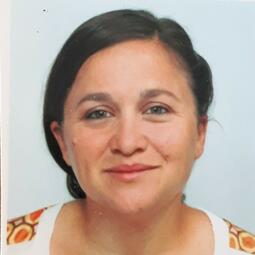
Mitochondrial RARS2- biology and synthetic lethality in AML
Acute myeloid leukemia (AML) is the most common type of acute leukemia in adults and is very difficult to treat. It is a cancer of the blood forming cells that live in the bone marrow. In the last decade new targeted treatments have emerged, such as inhibitors of mutant IDH, FLT3, and NPM1. The success of these therapies highlights how identifying targets in AML cells can lead to new therapies.
We, and subsequently others, demonstrated that a subset of AML cells has increased reliance on mitochondrial metabolism and pathways. In this project, we analyzed the Cancer Dependency Map (DepMap) public database to identify components of the cell that are essential for only a subset of AML patients. We identified one target protein, called RARS2, whose dependency was highly variable in AML cell lines. This grant will uncover new knowledge and hopefully highlight a novel therapeutic target and the subpopulation of AML samples most and least likely to respond RARS2 depletion.
In this era of targeted and immuno-oncology drugs for adults, very few successful examples have been translated to childhood blood cancer treatment. While advances have been made in this arena, cure rates remain low for certain blood cancer types, and considerable adverse long-term effects are associated with traditional therapies. These projects focus on addressing gaps and improving outcomes for children with blood cancers.

The role of XPO2 in leukemia development in childhood and adolescent AML
Acute myeloid leukemia (AML) is a difficult-to-treat leukemia that develops in children, teens, and adults and is associated with high relapse rates. Many of the chemotherapy medicines that are used in AML target both leukemia and healthy cells, resulting in many side effects for patients. New agents are needed that better target leukemia cells, while protecting normal non-cancerous cells.
The nucleus of a cell is where the cell gets the instructions on how to behave, grow and divide. Cancer develops because cells grow abnormally and do not respond to stop signals in the nucleus. If proteins move into or out of the nucleus at the wrong time, they can give faulty instructions to the cell that can contribute to cancer development. These proteins enter and exit the nucleus with the help of transporters, known as importins and exportins. Many of these importins and exportins have not been studied in leukemia.
We recently discovered that high levels of the exportin, XPO2, are associated with worse outcomes in childhood and adolescent AML. This study will identify the role of XPO2 in leukemia development in childhood and adolescent AML. We will determine if certain genetic subtypes of childhood and adolescent AML are more reliant on XPO2, and thus more likely to benefit from therapies that stop this exportin from working.
Funded in memory of Bo with Kindred Foundation

Harnessing the phenotypic stability of ALL blasts to improve outcomes
The goal of this study is to understand and better predict why acute lymphoblastic leukemia (ALL), the most common type of cancer occurring in children, often comes back after treatment. Despite good outcomes from chemotherapy, leukemia comes back in too many children.
Relapsed leukemia is very hard to treat, and new therapy options are sorely needed. In this study, we will expand on our novel analysis of leukemia cells to develop an approach that might allow us to get an early look at the leukemia cells that are most likely to cause relapse. By identifying and characterizing these cells, we may be able to design better approaches for eradicating them before they have a chance to cause a relapse.

Immunotherapeutic targeting of IL1RAP in pediatric ALCL and AML
Anaplastic large cell lymphoma (ALCL) is one of the major types of lymphoma in children and young adults. Acute myeloid leukemia (AML) accounts for about 20% of all childhood leukemias. Although the prognosis of ALCL and AML has been improved in the last few decades, the commonly used chemotherapies are highly toxic and can cause gene mutations. Therefore, alternative therapeutic strategies are urgently needed, especially for growing children with cancers.
One of the most promising strategies is immunotherapy, which empowers a patient’s own immune system to attack cancer. We recently identified a surface protein called IL1RAP that is also highly expressed in ALCL and AML. To target IL1RAP via immunotherapy, we have developed a specific therapy targeting IL1RAP leading to tumor cell killing in laboratory cell cultures.
In this grant we will develop, test and optimize targeting of IL1RAP with the goal of generating optimal treatment of childhood ALCL and AML.
LLSC's Operating Grants, in partnership with aligned organizations, provide funding to research that may lead to a significant change in the understanding, diagnosis, or treatment of leukemia, lymphoma, myeloma, myelodysplastic syndromes, and myeloproliferative neoplasms.

Characterization of a novel differentiation inducer of non-APL adult AML
Acute myeloid leukemia (AML) is a cancer of the blood where non-functional blood cells accumulate to the detriment of healthy blood cell production. There are multiple kinds of AML and among them, acute promyelocytic leukemia (APL) is the only kind for which a treatment ensures the survival of 4 out of 5 patients. That treatment is “differentiation therapy,” which works by helping non-functional leukemic cells transition or “differentiate” into mature cells like healthy cells do normally. Only 10% of AML patients have APL.
This therapy is extremely effective, less toxic, and “corrects” leukemia cell behavior to differentiate as healthy cells do. We have examined thousands of molecules and identified one that is able to differentiate other kinds of AML besides APL. For the first time, we have a starting molecule to develop differentiation therapy for other types of AML, with the hope it will be as effective as differentiation therapy used for APL.
We will first understand how this molecule works to ensure it is safe for approval and testing in patients, with the goal that this will become a future drug and game changer in the treatment of all types of AML.
This LLSC grant is funded in partnership with Cancer Research Society

Real-time remote monitoring of allogeneic stem cell transplant recipients
Allogeneic (donor) stem cell transplantation is the prime example of cell-based therapy that attempts to cure blood cancers such as leukemias. While this procedure offers up to 70% of patients the chance of a cure, it comes with high transplant-associated mortality. For this reason, patients are kept in the hospital for several weeks after transplantation.
However, a recent study has shown that it is safer for the patient to be discharged as early as possible after the procedure, and outcomes are superior compared to those patients kept in hospital for closer observation. These results were very surprising, but have only been adopted in practice at a few centres worldwide due to the logistics involved.
This project is testing a remote monitoring tool on the patient’s mobile phone, combining patient-reported data with data from a smart watch so the healthcare provider can obtain all information necessary, while the patient can stay at home. In collaboration with patient-partners, we will test how well such an application is received, whether symptom reporting can be performed reliably, and whether patients adhere to the reporting over a longer period.
This LLSC grant is funded in partnership with Cancer Research Society

Targeting myristoylation to treat CLL
Chronic lymphocytic leukemia (CLL) is an incurable disease and the most common leukemia in adults. Targeted therapies such as ibrutinib and venetoclax have improved overall patient survival. Unfortunately, the disease returns and is often drug resistant, so new treatments are needed.
Our team has recently developed a novel drug, a myristoylation inhibitor, named PCLX-001 that blocks alterations in signaling proteins. The effectiveness of PCLX-001 in treating CLL is unknown. In this project, we will first determine the extent and mechanism of how PCLX-001 kills CLL cells.
Next, we will treat drug-resistant CLL cells with PCLX-001 alone, or in combination with known CLL therapies, to determine whether PCLX001 is effective in CLL cells.
Finally, we will test whether PCLX001 can be an effective treatment for CLL, and if so, lay the foundation for future clinical trials in drug-resistant CLL patients.
This LLSC grant is funded in partnership with Cancer Research Society

Novel immune and myeloma monitoring for patients treated with cell therapy
Myeloma is an incurable cancer. While major advances have been made in laboratory testing, with assessment of measurable residual disease (MRD) now possible, these tests are not yet widely available. Chimeric antigen receptor (CAR) T cell therapy is also showing great promise; however, it is not yet funded for people with myeloma in Canada, with limitations including toxicity and high cost.
We propose developing an innovative laboratory test with wide relevance in myeloma, and in any patient with lymphoma or leukemia receiving CAR T treatment. The Triple Test is designed to concurrently measure MRD, the persistence of T cell therapies in the body, and how well the immune system is working.
In the first phase of the project, we will develop and validate the Triple Test at Kingston Health Sciences Centre. In the second phase, the Triple Test will be incorporated in The TACtful Trial, a Canadian Cancer Trials Group multicentre phase I clinical trial.
The trial tests a new type of cell therapy – TAC T cells – designed to reduce side effects seen with CAR T cell therapy, while maintaining anti-myeloma benefit at a potentially lower cost. The Triple Test will screen patients before being enrolled in the trial, monitor MRD, and measure how long the TAC T cells persist in their body.
The goal is to make the Triple Test widely available to support research in further multicentre clinical trials, and be a readily accessible standard of care test for patients with blood cancer.
This LLSC grant is funded in partnership with Myeloma Canada.

Revealing pharmacologic inhibitors in T-ALL acting on MYC-GPS
Standard of care in pediatric T-cell acute lymphoblastic leukemia (T-ALL) includes topoisomerase inhibitors, microtubule targeting drugs and corticosteroids that are administered over a two-year treatment regimen. Despite cure rates of 90%, the long duration of such drastic chemotherapy in pediatric patients has immediate as well as long-term consequences that irreversibly alter their quality of life. Moreover, the prognosis in adolescent/adult T-ALL, and in relapse T-ALL at all ages, is appalling.
Treatment-resistant disease suggests that current chemotherapy fails to target leukemia cell vulnerabilities. In this era of precision medicine, we propose to identify drug-like compounds that degrade the protein (MYC-GPS) abnormally causing leukemia, yet whose function is not essential in normal cells. To meet this challenge, we build on our uniquely converging expertise in multidisciplinary and state-of-the-art approaches to normal blood stem cells and leukemic stem cells in T-ALL.
Our objective is to improve chemotherapy by identifying drugs that efficiently kill leukemic stem cells that cause acute leukemias (T-ALL) and spare normal blood stem cells.
This LLSC grant is funded in partnership with Cancer Research Society

Precise HLA gene editing to extend transplants to underserved patients
Most leukemia patients only have the option of poorly effective treatments that kill their normal blood-forming cells as well as their leukemic cells. Moreover, most patients that survive also suffer from long-lasting significant side effects of their treatment. The most successful current treatment involves harsh chemotherapy treatment followed by a large infusion of normal blood-forming cells from a “histocompatible,” but often necessarily unrelated, donor.
Unfortunately, finding a suitably matched donor is rarely successful for Canadian leukemia patients of Indigenous or Asian origin because their genetic backgrounds are quite different from the Canadian population with a Caucasian background.
To address this barrier, we propose to develop the potential of a new state-of-the-art gene-editing technology that will very specifically and permanently change the key genes in candidate sources, while maintaining the key regenerative properties of the original cells.
This LLSC grant is funded in partnership with Cancer Research Society

Decoding the immune basis of post-transplant lymphoproliferative disorders
We aim to deepen our understanding of Post-Transplant Lymphoproliferative Disorders (PTLD), an understudied disease that results from the abnormal growth of white blood cells after organ transplantation. These patients, already navigating health complexities, may face the additional burden of PTLD, a potentially devastating diagnosis. PTLD occurs in 2-5% of transplant recipients and poses significant challenges for individuals who have undergone organ transplantation.
Current treatments, such as chemotherapy, are often poorly tolerated due to pre-existing health conditions. Our goal is to enhance our understanding of the biological underpinnings of PTLD, opening avenues for precisely targeting this disease.
We will profile patients’ tumour samples using innovative techniques to determine genetic differences at the level of individual cells. This innovative approach will identify specific types of immune cells that may be enriched in patients having a good vs. poor response to therapy, for example. The insights gained from our research have the potential to pave the way for more effective treatments, improving patient outcomes.
This LLSC grant is funded in partnership with Cancer Research Society

Mix-and-match, off-the-shelf CAR-DNT therapy for B-cell malignancies
Our team is exploring an innovative approach to treat leukemia using unique immune cells called Double-negative T cells (DNTs). These rare cells have shown potential in fighting leukemia without harming healthy tissues. We've developed a technique to grow these cells in large numbers, making them suitable for therapy.
Recently, we tested DNTs in a clinical trial for leukemia patients who hadn't responded to other treatments. The results were promising, showing that DNT therapy is safe and could potentially extend life.
Our new project combines DNTs with advanced chimeric antigen receptor (CAR) technology, commonly used in cancer therapy, to create CAR-DNTs. This approach aims to improve current CAR-T cell therapies by making them more accessible and reducing the chances of cancer relapse. Our goal is to provide a treatment that's readily available with better long-term outcomes in leukemia patients.
This research will explore the potential of CAR-DNT as an innovative CAR-based treatment strategy that is accessible and more effective for leukemia patients.
This LLSC grant is funded in partnership with Cell Therapy Transplant Canada

Targeting the LSC pool: Multi-omics and machine learning approach
Acute myeloid leukemia (AML) is a highly challenging cancer with leukemia stem cells (LSC) playing a pivotal role in disease progression and relapse. While standard chemotherapies target downstream progenitors of LSCs, the inherent heterogeneity within LSCs hampers complete eradication, contributing to drug resistance and relapse.
This project aims to conduct a multi-omics, single-cell level analysis of LSCs to unravel their heterogeneity. Employing artificial intelligence, we will identify drug combinations effective against diverse LSC types, and these predictions will undergo laboratory validation.
This LLSC grant is funded in partnership with Cancer Research Society

Long-term immune reconstitution in AlloBMT recipients
Bone marrow transplants (BMT) are a crucial treatment for blood cancers. They work by having the donor's immune system fight the cancer, but this can lead to complications like graft-versus-host disease (GvHD) and infection. We need to understand how the immune system recovers post-transplant and its impact on long-term health.
We don't fully grasp how the immune systems of donors and recipients compare over time, and we don't know why stem cell transplant recipients are more vulnerable many years after transplant. We aim to examine the immune systems of allogenic BMT (alloBMT) recipients five years or longer after the procedure.
Using blood samples from donors and recipients, we'll use advanced techniques to understand their immune cell makeup. This involves studying various immune cell populations and their functions to assess the transplant's success.
This study will reveal potential shortcomings in immune responses after BMT. Understanding these issues is crucial, especially considering recent challenges like the COVID-19 pandemic, and will help improve survival from blood cancers.
This LLSC grant is funded in partnership with Cancer Research Society

Intracellular IL23 Receptor (IL23R) regulates mitosis and AML proliferation
Cancer cells, including acute myeloid leukemia (AML) cells, usually have abnormal numbers of chromosomes. This abnormal genetic material leads to cancer, but also presents a stress to the cancer cell when the cancer cell must divide. Cancer cells find mechanisms to adapt to this stress and divide with abnormal numbers of chromosomes.
IL-23R is the receptor for the IL-23 cytokine and is usually found on the surface of immune cells. We discovered that IL-23R is also found inside AML cells and normal blood cells. Inside the cells, it helps the leukemia cells divide.
In this grant, we will determine how IL-23R regulates cell division, uncover new information on how AML cells divide, and hope to validate IL-23R as a new therapeutic target for a subset of AML patients.
This LLSC grant is funded in partnership with Cancer Research Society

Bypassing lenalidomide resistance in deletion 5q myelodysplastic syndrome
About 10% of patients with myelodysplastic syndrome (MDS), a bone marrow cancer, have a specific gene change known as deletion of 5q (del(5q)). Patients with this type of MDS often require blood transfusions, which can negatively impact quality of life, but this can often be improved with a drug called lenalidomide (Len). While most patients will be able to come off transfusions for a while with Len, eventually it stops working, and there are currently no good treatments for these patients.
Preliminary data suggests that cancer cells from patients with del(5q) MDS that are resistant to Len have too much hormone signaling related to cell growth. There are several commercially available drugs that can impair this signaling (MEK inhibitors, MEKi), but none of them have been tested in patients with del(5q) MDS before.
We want to do additional pre-clinical studies to confirm that these drugs (MEKi) work when you try to use them in a simulated bone marrow environment, and determine what the right dose might be.
This LLSC grant is funded in partnership with Cancer Research Society
transferred to skip link location: 2024-pediatric-grants
transferred to skip link location: 2024-operating-grants
transferred to skip link location: 2024-physician-scientist-fellow-awards
transferred to skip link location: 2024-quality-of-life-grants
Quality of life research asks the question: "How does a cancer diagnosis and treatment affect a patient's overall life?" It considers physical health, but also mental health, social relationships, and the ability to do things that are enjoyable and necessary to live a full life. This funding will advance our knowledge of the challenges and opportunities to improve quality of life throughout the cancer experience for people affected by blood cancers and their families.

The PROSLEEP program to improve quality of life after blood cancer
Many adults with a blood cancer experience persistent sleep problems, which affects symptom management, activity tolerance, and their quality of life. Identifying high-risk individuals early on could mean they receive tailored state-of-the-art strategies in sleep hygiene education, coaching in relaxation, and professional/peer support. This is particularly important as drugs commonly prescribed to treat sleep in oncology are not recommended for extended use.
Addressing this issue, the PROSLEEP program was recently established with the support of the LLSC to document sleep patterns and their impact on symptom severity, daily activities, and quality of life in blood cancer survivors. The study has involved 30 blood cancer participants so far, tracking their sleep and related co-morbidities using actigraphy (a sensor usually worn on the wrist), daily diaries, and weekly questionnaires.
Participants with persistent sleep issues have completed a two-week tailored program administered by sleep experts alongside trained patient-partners, demonstrating its feasibility. The proposed follow-up study will recruit 38 additional patients to estimate the program’s validity and further explore participants’ satisfaction with it. The results will be presented during collaborative workshops with clinicians, administrators, and other stakeholders at various sites, providing insights into the program's deliverability in real-life contexts.

South Asian older adults’ experiences of blood cancer
Many older South Asians now call Canada home, after immigrating from India, Pakistan, Bangladesh, Sri Lanka, and Nepal. Cancer rates among older South Asians (65 years or older) are increasing. We need to understand how South Asians with blood cancer care for themselves as they age. We will study how older South Asians in BC manage their blood cancer.
We want to know (1) how they define taking care of themselves; (2) how they take care of themselves; and (3) what advice and suggestions they have. We want to learn more about their experiences in managing their health when they have blood cancer. This research project will allow us to talk to the South Asian community in Canada and create information to build care matched to their culture and language.

Improvement of women’s health after allogeneic stem cell transplantation
A stem cell transplant from a donor (allogeneic transplant) remains the best treatment to cure blood cancers such as leukemias. Despite improvement in donor availability and cure rates using unrelated and partially compatible family donors, allogeneic transplant remains associated with significant long-term side effects, the most important being chronic graft-versus-host disease (cGVHD).
Occurring in 30% to 70% of patients, cGVHD is an immune system dysfunction which may involve all body organs, including genitalia, and requires the intake of drugs such as cortisone with many side-effects for several years. In women, cGVHD may cause vulvovaginal discomfort, discharge, pain, and even vaginal narrowing.
There is currently very scant data on the incidence, risk factors, clinical presentation, and impact on sexual health of cGVHD following modern transplants. We aim to gain knowledge on vulvovaginal cGVHD by conducting a prospective study in which data on other important female issues - including management of menopause, genital infections, sexual health, and quality of life - will be collected.
Once we have reliable data on genital cGVHD, our long-term goal is to elaborate guidelines for transplant physicians, gynecologists, and family physicians to provide better care for Canadian allotransplanted women.
transferred to skip link location: 2024-canadian-led-immunotherapies-in-cancer-clic-01
transferred to skip link location: 2024-supporting-other-organizations-research-programs
LLSC is partnering with BioCanRx to help Canadian scientists expand their ability to conduct clinical trials of CAR T therapy. BioCanRx, Canada’s Immunotherapy Network, is a network of scientists, clinicians, cancer stakeholders, academic institutions, NGOs and industry partners working together to accelerate the development of leading-edge immune oncology therapies for the benefit of patients.

Canadian-led clinical trial of made-in-Canada CAR T-cell therapy for relapsed leukemia and lymphoma
CAR T-cell therapy uses a patient’s own immune T cells to detect and kill cancer cells. The complex process involves extracting T cells from the blood and genetically modifying them in a lab to find and kill cancer cells. These supercharged cells are then put back into a patient’s bloodstream where they multiply and find and destroy cancer cells.
Until now, Canada has been without the laboratory facilities to modify these all-important T cells. BioCanRx’s Canadian-led Immunotherapies in Cancer (CLIC-01) trial is unique because it is the first ever to develop and manufacture CAR T cells in Canada. With more than 70 patients in the trial, CLIC-01 has demonstrated that patients can be treated with Canadian-made CAR-T cells in a timely fashion, with the possibility of durable responses.
The trial is now working to add in more clinical and manufacturing sites to build a larger national footprint for access and implementation of this CAR-T cell trial, with the goal of eventually reaching market authorization in Canada.
Dr. Kekre has been leading the CLIC-01 trial, which treats patients with relapsed/refractory blood cancers. In this expansion phase of the trial, Dr. Kekre hopes to grow the research program so that more Canadians all over the country can access this innovative, life-saving therapy.
LLSC is a funding partner of BioCanRx’s CLIC-O1 clinical trial.
The Leukemia & Lymphoma Society of Canada (LLSC) is a funding partner supporting other organizations’ research programs.

Defining the origin and metabolic pathways of osteolytic bone lesions in multiple myeloma
One of the most common and debilitating features of myeloma is the effect it has on bones. Abnormal plasma cells (myeloma cells) in the bone marrow affect the surrounding bone, causing soft spots to develop. These soft spots, referred to as osteolytic or lytic lesions, lead to weakened bones, an increased risk of fractures, decreased mobility, and pain that is often severe, chronic, and difficult to manage. As such, lytic lesions can severely compromise an individual’s functional abilities and independence.
Lytic bone lesions often indicate advanced disease progression and are associated with a higher risk of complications, including hypercalcemia, spinal cord compression, and increased susceptibility to infection.
Osteolytic lesions can also lead to anemia and increased susceptibility to bleeding. As such, finding new treatments that specifically target bone remodeling processes is crucial for people with myeloma.
Innovative therapeutic approaches that can inhibit bone degradation and promote bone formation can prevent fractures and improve overall disease management.
Dr. Florian Kuchenbauer and team are researching novel solutions for preserving bone structure and preventing fractures. Such treatments can potentially reduce complications, enhance response to anti-myeloma therapies, and extend survival.
Advancing our understanding of osteolytic bone lesions and developing novel therapeutic strategies holds great promise for improving outcomes and the overall well-being of individuals living with this difficult and complex disease.
LLSC is a co-funding partner of Myeloma Canada's Aldo Del Col Research Grant.

Creating nanobody bispecific engagers for the treatment of multiple myeloma
People with triple refractory myeloma (where the disease is not responsive to immunomodulatory drugs, proteasome inhibitors, and anti-CD38 antibodies) unfortunately have a poor prognosis. While chimeric antigen receptor T-cell (CAR-T) therapies show great promise in treating the disease, the cost and complexity of CAR-T manufacturing has limited its accessibility, particularly in Canada.
Bispecific antibodies, however, can provide a treatment option that is more broadly accessible with shorter patient wait times, increased dosing flexibility, and at a lower cost than CAR-T therapies. Although a bispecific T-cell engager (BiTE; teclistamab) was approved by Health Canada in 2023 for the treatment of myeloma, clinical access in Canada is still limited. Like BiTEs, bispecific natural killer cell engagers (BiKEs) may have less toxicity than T-cell targeting bispecific antibodies, though they are less explored and have fewer molecules in development.
Dr. Scott McComb and his research team have well-established expertise in myeloma target identification, identification of novel antibodies, and immunotherapeutic development.
In this study, they propose to generate novel high quality ‘llama-derived single-domain antibodies’ (known as nanobodies) that bind strongly to proteins expressed on myeloma cells. The team will then use these new nanobodies to generate new BiTE and BiKE molecules to assess their functionality for inducing T-cell or NK-cell mediated myeloma killing. Downstream of this work, the team intends to rapidly translate one or more of the new therapeutics for clinical trials in Canada.
LLSC is a co-funding partner of Myeloma Canada's Aldo Del Col Research Grant.

Understanding the biology and outcome of young myeloma patients treated with modern therapies in Canada
Young myeloma patients, as defined in this study, are people 50 years old or younger. While myeloma is devastating to anyone at any age, younger patients face unique challenges. They can potentially lose the greatest number of years to the disease because it occurs during their most productive years of life, and the disease, its treatment, and its repercussions leave a negative impact on their young families.
Little is known about younger patients’ clinical and biological characteristics at diagnosis and how those characteristics can affect their survival. There is currently scant data on young myeloma patients treated with modern therapies available in the research literature and no data on young Canadians with myeloma. Optimal disease management remains unclear because younger people with myeloma also tend to be underrepresented in clinical trials.
Using the Canadian Myeloma Research Group database, Dr. Jean Roy and his team will be retrospectively analyzing data from approximately 530 young patients. The knowledge gained from the project will help Canadian clinicians provide accurate survival data to their young patients treated with modern therapies, and provide essential data to design prospective clinical trials using novel cellular therapies with the aim of a cure.
LLSC is co-funding this Aldo Del Col Research Grant from Myeloma Canada.

Targeting PIKfyve for the treatment of multiple myeloma
Survival rates for people with myeloma have significantly improved and more people are living longer with a better quality of life than before. While this is extremely encouraging, most individuals relapse because of drug resistance. Two urgent challenges immediately become evident: the need to identify novel therapeutic alternatives; and understand the mechanisms of treatment resistance to prevent or overcome myeloma relapses.
Dr. Keith Stewart and team endeavoured to detect unrecognized, vulnerable myeloma targets to establish a new approach to treating myeloma. PIKfyve was identified as a druggable novel target. Among other molecules, the highly potent PIKfyve inhibitor PIK-001 has shown robust anti-myeloma activity in preliminary analyses.
In this study, the researchers are further investigating the cytotoxicity (the degree a substance can cause damage to a cell) of PIK-001 against human myeloma cells, exploring combination protocols with known myeloma therapeutics, and characterizing the mechanisms of resistance to PIKfyve inhibition.
The pre-clinical data obtained by this study will inform a planned phase 1 clinical trial design and further develop these novel potent PIKfyve inhibitors for regulatory approvals for clinical use. This will represent an important and exciting addition to the myeloma treatment arsenal for the myeloma patient community.
LLSC is a co-funding partner of Myeloma Canada's Aldo Del Col Research Grant.
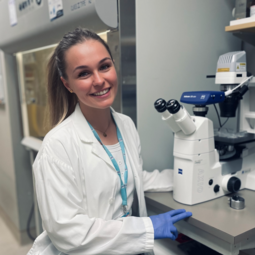
Exploration of leukemic stem cell niche-mediated drug resistance in hiPSC-derived marrow-like organoid model
Since most blood cancers originate from bone marrow, the development of a bone marrow-like model that can be studied in the lab will allow researchers to better understand how blood cancers evolve.
This project will help to establish a “physiological hiPSC-derived bone marrow-like organoid model” that will be used to first focus on understanding leukemic stem cells, with plans to include other areas of leukemic cell development as well as other blood cancers, leading to a better understanding of the origin of blood cancers.
LLSC is a co-funding partner of Cancer Research Society's Doctoral Research Award.

Investigation of novel antileukemic compounds uncovered through high-throughput screening of human model leukemias
Acute myeloid leukemia (AML) is a genetically and biologically diverse group of diseases that is difficult to treat and has poor prognosis. In pediatric AML, the lack of patient samples and the limited number of leukemic cells in pediatric samples pose challenges for finding new targets for therapy.
To overcome these issues, this team has collaborated with other researchers to acquire many AML samples, so that a detailed analysis (high-throughput screening) of these cells can be performed to identify potential molecules with anti-AML activity. The promising results of this study have highlighted several compounds of interest, and the identification of their potential targets and mechanisms of action may lead to development of new therapies for AML.
LLSC is a co-funding partner of Cancer Research Society's Doctoral Research Award.
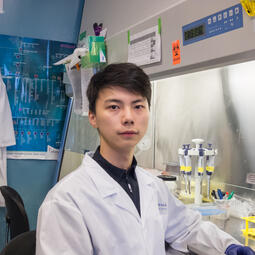
Universal chimeric antigen receptor progenitor T cells (CAR-Pro-T) therapy for cancer
This project aims to develop a universal chimeric antigen receptor progenitor T Cells (CAR Pro-T) therapy. Currently, CAR T therapy uses T cells that are isolated from the patient’s own blood, which are then engineered, and then transplanted back into the patient. This is a time-consuming process that has limited application and high costs. This research team proposes to use a type of cell called an induced pluripotent stem (iPSC) as the source of CAR T therapy cells. These cells can be manipulated in the lab and reprogrammed to become T cells which can be used for CAR T therapy. This would eliminate the need to use a patient’s own cells thus removing many of the existing barriers for CAR T cell treatment.
LLSC is a co-funding partner of Cancer Research Society's Doctoral Research Award.
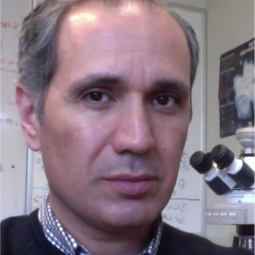
Development of a novel BCL2L1 armored CAR T-cell and a tumor-immune interactome in multiple myeloma
A resurgence of immune-based therapeutics, paralleled by significant advances in single cell genomics, has led to unprecedented responses in cancer. Multiple myeloma (MM) has benefited from the introduction of engineered immune T cells (CAR-T) and bispecific antibodies with very promising, but not yet curative, responses.
Large gaps also remain in our understanding of the causes of resistance to immune therapies. To help understand this and develop the next generation of these immune therapeutics, such as a novel BCL2L1 armored CAR T-cell, this research team is investigating at the genomics of the immune environment (interactome), at the single cell level, as well as MM cells.
LLSC is a co-funding partner of this Translational Research Program grant with The Leukemia & Lymphoma Society (US).
2023 Research Investment
Quality of life Research asks the question: "How does a cancer diagnosis and treatment affect a patient's overall life?" It considers physical health, but also mental health, social relationships, and the ability to do things that are enjoyable and necessary to live a full life.
This funding will advance our knowledge of the challenges and opportunities to improve quality of life throughout the cancer experience for people affected by blood cancers and their families. The 2023 Blood Cancer Quality of Life grants are supported by Steele Auto Group.

However, there is limited research on the challenges of returning to work after allogeneic hematopoietic stem cell transplantation (allo-HSCT) and only 50% to 60% of blood cancer survivors return to work after this treatment.
This study aims to document the RTW process and determine the support needs of those who have received an allo-HSCT.
Findings will be used to develop strategies, educational content and timely RTW recommendations to improve QoL for patients receiving an allo-HSCT.

Teens and young adults aged 15-39 (AYAs) diagnosed with a blood cancer face a unique set of challenges because of treatments that interrupt typical development processes.
Some of these challenges include barriers to forming their own identity and independence, pursuing higher education and careers, and gaining social skills to develop friendships and intimate relationships.
These barriers may deeply impact their mental wellbeing and their overall quality of life for the rest of their years.
This study looks to understand and identify the mental health outcomes and experiences of AYAs with blood cancers.
Findings from this study will help raise awareness and fuel advocacy for the mental health needs of AYAs with blood cancers at the provincial and national levels with the goal of improving their quality of life.

Patient-reported outcomes (PROs) are tools used by patients to provide feedback on their health, quality of life, and treatment. Electronic (e) PROs are used to capture cancer-related symptoms and their severity.
Unfortunately, there has been little research into the ePRO follow-up approach with patients receiving immunotherapy.
Our team has developed a digital platform, called V-Care, using ePROs to provide cancer patients receiving immunotherapy with the ability to send alerts to their clinician if they are experiencing severe or changing symptoms.
This study looks to understand the symptoms that may predict the onset of irAEs and test the utility of the V-Care platform.
Findings will be used to help clinicians identify patients at high risk for developing irAEs.

Two recent studies have shown that not enough attention is being given to the educational challenges faced by the growing population of Childhood and Adolescent Hematological Malignancy (CAHM) survivors.
With a team of CAHM survivors, families, healthcare providers, social workers, educators and researchers, this study looks to address key knowledge gaps and develop a new evidence-based education module for Survivorship Care Plans.
The aim of this study is to improve CAHM survivors’ reintegration into school and help them achieve their full educational potential.
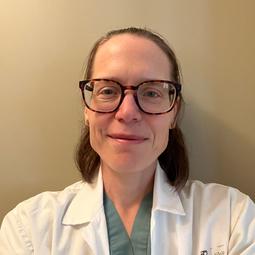
People diagnosed with MPN may live for a long time, but can be very sick and suffer disease complications, greatly affecting their quality of life (QoL).
AYAs with MPN face a unique set of physical, social and emotional challenges which are poorly understood as few research studies exist.
This study looks to understand the symptoms and impact of on daily life in AYA vs non AYA MPN patients, in addition, to developing a QoL tool to guide those caring for AYAs with MPN.
This is the first time that QoL issues have been studied in AYA with MPN population.
This study has the potential to change how we treat AYA (identify markers for early intervention; personalize therapy), which will translate to patients not only living longer but living better.
Importantly, key findings and new resources developed will serve beyond simply AYA with MPN, but a larger AYA population with blood cancers in Canada – and worldwide.
The Clinician Scientist Fellow Award encourages early-stage specialist clinicians to pursue a career in blood cancer research. This opportunity is designed to foster the acquisition of skills and independence to conduct research in blood cancers in the laboratory, in the clinical setting or at combined levels.
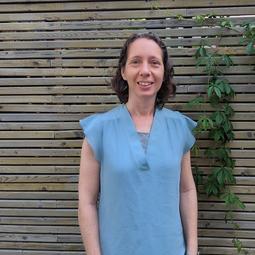
This study focuses on understanding a type of leukemia cell that arises during early chemotherapy. These cells evolve in a way that enables them to escape the effect of chemotherapy and survive, remaining a source of leukemia in the bone marrow that can cause the disease to come back.
Data has shown that these leukemia cells can be targeted using immunotherapy. The study will analyze these cells to understand how immunotherapy acts on the cells and why it is effective.
Findings will be used to identify how best to target these cells with immunotherapy and the best time for immunotherapy to be used.
The LLSC is pleased to partner with Cancer Research Society to co-fund ten (10) blood cancer projects from the CRS 2022 Operating Grant Competition.
The grants that focus on advancing the understanding of and improving treatment options for all blood cancers.
T cell-acute lymphoblastic leukemia (T-ALL) accounts for approximately 15% of all childhood leukemia and 25% of all adult leukemia. Although chemotherapy has improved the treatment of T-ALL, especially in children, resistance to chemotherapy is a major factor in patient relapse and is associated with poor outcome and with significant fatalities. Therefore, a better understanding of how leukemic T-ALL cells manage to escape chemotherapy and become resistant will likely lead to more effective therapies.
Our team has recently identified a molecule called GPR52 expressed in leukemic T-ALL cells, and which can be a critical factor in the resistance of these cells to chemotherapy. When we blocked this molecule, we were able to destroy leukemic cells with chemotherapy with greater success. In this proposal, we will characterize the implication of GPR52 in the development of drug resistance of leukemic T-ALL cells and examine the mechanisms by which it does so. We will also determine if blocking GPR52 can be effective in eradicating leukemic T-ALL cells from patients who have received chemotherapy. These studies have the potential of revealing a novel therapeutic target in T-ALL. Accordingly, inhibition of GPR52 with existing inhibitors combined with chemotherapy may be a novel strategy for T-ALL therapy to improve chemotherapy, lower toxicity and help prevent patient relapse.
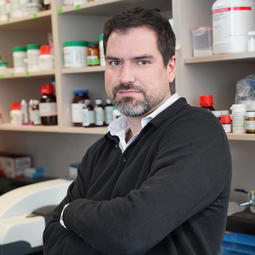
Acute lymphoblastic leukemia (ALL) is a blood cancer that occurs mostly in children. Although the prognosis is generally good, the treatment causes cumulative adverse reactions significantly affecting the quality of life of these young patients.
PEGylated asparaginase (PEG-ASNase) is a key drug used in the management of ALL. This drug is a bacterial protein that has been modified by attaching poly(ethylene glycol) (PEG), a synthetic polymer. A problem with PEG-ASNase is that some patients can develop antibodies that decrease the effectiveness of the drug while increasing adverse reactions. Some of these antibodies recognize the PEG on the protein.
PEG is very broadly used in the pharmaceutical and cosmetic industries, including in mRNA vaccines used to protect against COVID-19. This means that some people might develop anti-PEG antibodies before even receiving PEG-ASNase.
The mechanisms behind the production of PEG-recognizing antibodies are not well understood. This research project will explore how PEG-ASNase triggers the production of anti-PEG antibodies and evaluate how the drug cross reacts with pre-existing anti-PEG antibodies. In parallel, we will also fabricate a next generation of PEG-ASNase that does not have the limitations of the current treatment. Altogether, this project will lead to a better management of ALL patients with pre-existing anti-PEG antibodies and will contribute to the development of a novel class of safer therapies.
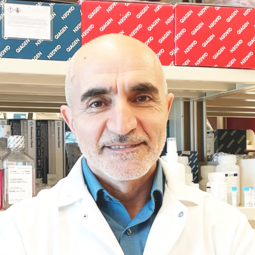
Killer T-cells are a critical part of the immune system which fight cancers. This protection is achieved by the killer T-cells’ ability to target and kill tumour cells. However, the cancer-killing capabilities of killer T-cells can be progressively reduced, commonly referred to as killer T-cell exhaustion. Exhausted killer T-cells display special proteins on their surface that prevent their ability to kill tumour cells.
Recently, we discovered a special protein, called CD160, on the surface of killer T cells in the blood and bone marrow of patients with chronic lymphocytic leukemia (CLL). We found that malignant cells in CLL patients are constantly secreting another protein (IL-16) which is responsible for the increased presence of CD160. The presence of CD160 acts like a break on the immune system. Finally, we noted that a higher presence of IL-16 was associated with poor prognosis in CLL patients.
Therefore, we propose conducting further studies on a larger group of patients to reconfirm our previous observations. We will also use a model of CLL to investigate the potential of targeting this secreted protein (IL-16) by malignant cells as a therapeutic approach. We believe our studies will enable us to propose a potential and novel immunotherapy target in CLL and possibly other blood cancers.

Acute myeloid leukemia (AML) has a five-year survival rate of 21%. AML is difficult to treat because when diagnosed, the disease has already become complex and aggressive. The disease is sustained by cancer driving blood stem cells, which have acquired many extra mutations beyond the original ones that first led to the early disease or “pre-leukemia”.
Consequently, targeted treatment against these few early genetic changes prior to AML is crucial. It is our goal is to study the pre-leukemic disease myelodysplastic syndrome (MDS) to uncover these key factors.
One process which may promote pre-leukemic blood stem cell development is alternative splicing, which can lead to the production of different proteins from the same genetic information. We have found that changes in how the protein MBD1 is spliced may create and maintain the MDS disease state.
The research team will map pre-leukemic changes stimulated by incorrectly spliced MBD1 and test the therapeutic potential of depleting it in patient MDS cells. We will also establish the biological changes stimulated by incorrectly spliced MBD1 to identify processes that might respond to treatment with drugs.
Though critical to early intervention and prevention of AML, our knowledge of therapeutic targets in early MDS/AML development are limited. Identification of alternatively spliced MBD1 as a key initiating factor will give crucial insights into pre-leukemic biomarkers and treatable pathways, providing great promise for early AML diagnosis and intervention.

The transplantation of an organ is a critical point in the life of patients who live with failing organs. For example, an organ transplantation can eliminate the need for dialysis for patients with end-stage kidney disease, or hopefully prevent death from terminal lung or heart conditions.
Unfortunately, an organ transplantation is accompanied by the requirement for life-long immunosuppressive treatment, which comes at the cost of health complications, including infections and an increased risk of malignancies. Of particular importance is the abnormal growth of tumours that arise from a specific type of white blood cells, known as lymphocytes. This growth is referred to as Post-Transplant Lymphoproliferative Disorder (PTLD).
The development of PTLD is a serious condition that carries a risk of early death. Moreover, patients may require toxic chemotherapy, which is often poorly tolerated due to comorbidities and pre-existing immune suppression. Consequently, there is a compelling need for better therapies for PTLD.
Unfortunately, the nature of PTLD is not well understood. In this proposal, we will perform an in-depth analysis of the composition of PTLD tumour samples, using a novel high-resolution technology which allows us to study these samples one cell at a time. We will uncover the biological underpinnings of this uncommon condition, which will unlock the potential to design novel therapeutic approaches.

AITL is an aggressive T cell lymphoma originating from normal “helper T cells” that defend our body from pathogens. Chemotherapy is the only treatment for AITL but it remains inadequate. As a result, we need more precise and powerful drugs to cure this disease.
Our research team recently invented ways to distinguish malignant tumour cells from normal helper T cells residing in the tumour. Importantly, the research team has collected evidence that these malignant tumour cells rely on an enzyme termed “EZH2” that dictates what type of genes should be turned on or off. Using research models of AITL, we will study how EZH2 promotes growth of AITL tumour cells and what genes are involved in this process. If successful, our study will uncover promising therapeutic targets to treat AITL patients.

Although most cancer vaccines based on the use of dendritic cells – type of immune cell - rely exclusively on the degradation of antigens by the immunoproteasome complex, the functional contribution of the thymoproteasome (TPr) to immunity remains unclear. We therefore explored whether mesenchymal stromal cells (MSCs) could behave as antigen-presenting cells following de novo expression of the TPr complex. Once confirmed for their ability to process and present peptides derived from soluble exogenous proteins, we next tested their protective efficacy against lymphoma and found that they can indeed trigger anti-tumoral responses. However, their mode of action remains unclear and involves an interplay with two important endogenous immune cells. The aim this study is to better understand how the MSCTPr cells rely on endogenous third parties to induce an immune response in order to develop new and more effective anti-lymphoma vaccine for cancer patients.

White blood cells can recognize and destroy tumour tissue. However, the white blood cells in cancer patients lose their ability to recognize tumours. We have developed methods, using genetic engineering, to restore the ability of the cancer patient's white blood cells to attack their tumours.
While our current method is effective, the manufacturing process is expensive and time consuming, which limits the accessibility of this promising therapy. To increase accessibility and reduce cost, we are developing white blood cells that can be delivered through hospital pharmacies, directly off the shelf. However, the programming of the white blood cells to attack cancerous tumours remains a challenge.
In this project, we will improve the engineering methods used to produce the off-the-shelf white blood cells and develop novel chemical methods to program the white blood cells to attack the cancer. Through these efforts, we aim to develop a flexible and dynamic therapy that can be used broadly to treat many cancers.
Acute leukemias are a collection of aggressive and devastating blood cancers. Despite improvements in treatment, relapse is frequent and inevitably leads to death.
Recent advancements indicate that blood cancers depend on specialized “support cells” in the bone marrow. However, it is not known if blocking the interactions between blood cancers and their support system can improve treatment for these blood malignancies.
Using cutting edge technology, this project will study the effects of removing blood cancer cells from their supportive environment on leukemic progression and relapse. The researchers envision that these studies will fundamentally lead to new therapies targeting these devastating cancers and ultimately improve patient outcomes.

Every year, AML affects one million people worldwide, resulting in 150,000 deaths. About 25 to 30% of AML patients have a mutation in the gene FLT3. Such mutations, called FLT3-ITD, typically result in an extremely high risk of relapse among AML patients.
Currently, the standard method to assess FLT3-ITD in patients is by using a laboratory technique called Polymerase Chain Reaction (PCR). However, because tumours are usually composed of a diverse population of cells with different genetic makeups , PCR can only obtain genetic information of all the cells in aggregate and cannot provide exact information on individual cells.
Such ambiguity can cause inaccurate prognosis or even prevent the identification of the best treatment options. To address these issues, our research team has decided to use state-of-the-art single cell sequencing technology to determine the exact genetic makeup of every single cell. This new technology can also measure the abundance of specific protein markers on the cell surface and provides additional information on these tumour cells. It has the promise of precisely defining tumour cell lineages during tumour progression and helping to improve prognosis and selection of optimal treatment.
LLSC’s operating grants fund projects that advance our understanding of blood cancers and improve treatment options.
The LLSC is pleased to partner with Cancer Research Society to co-fund fifteen (15) Operating Grants from the LLSC’s 2022 Operating Grant Competition

This study looks to understand how this enzyme is used by leukemia cells and investigate ways of targeting the enzyme and altering its function with drug-like molecules.
Findings may contribute to work that can be further developed for leukemia therapies and improved survival rates.

This cancer is very difficult to treat and less than 30% of patients with this disease survive long-term. In older patients, the survival rate is even less.
Fairly recently a new drug called Venetoclax has been shown to improve overall survival rates, even in older patients. However, in many cases, the leukemia becomes resistant to this treatment and/or returns.
This study looks to understand how fat cells located near leukemia cells protect AML cells from drug treatment and cause drug resistance.
Findings will advance the use of additional drugs that block the activity of these fat cells to make the effect of Venetoclax more long lasting improving the treatment of patients with this devastating disease.

While highly effective genetic engineering methods have been developed to restore this ability, these methods are also highly expensive because of the need to genetically engineer each patient's own white blood cells.
This study will develop new methods of creating white blood cell therapies that can be ready made or mass produced to overcome the high costs of manufacturing these therapies on a patient-by-patient basis.
Findings may lead to low-cost methods for producing white blood cell therapies that will make these therapies available to all patients who could benefit.

Mutations in a gene called IKZF3 cause changes in the IKZF3 protein in immature B cells, leading to leukemia.
The drug lenalidomide has been shown to eliminate IKZF3 in cancer cells.
This study will compare how lenalidomide affects cancer cells with mutated IKZF3 vs cells with normal IKZF3 to learn which genes are controlled by this protein.
Findings will be used to identify weaknesses in cancer cells that can be targeted using other drugs in combination with lenalidomide.

Drugs that unleash the power of the patient’s own immune system to fight cancer have shown promise in other tumor types, but similar results have not been found with DLBCL.
This study looks to understand how a specific protein, eIF4E, which is overactive in DLBCL, contributes to lymphoma progression.
Findings may suggest ways of blocking the activity of eIF4E in DLBCL to reduce the growth of lymphoma cells and improve survival rates.

This study will test the effectiveness and safety of tranexamic acid (TXA; a medication that prevents clots from dissolving) to see if it can improve the risk and/or severity of bleeding in these patients.
If findings show that we safely reduced the frequency of bleeding, this approach will change how doctors provide care for patients with MDS and AML around the world.
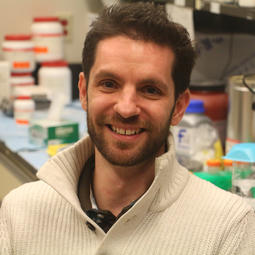
One immune system cell, the macrophage, can eliminate cancer cells by eating and digesting them.
Rituximab, an immunotherapy that uses macrophages to kill lymphoma cells, has demonstrated a dramatic improvement in treating multiple forms of lymphoma. However, lymphomas that stop responding to treatment and relapse remain a major concern.
This study looks to understand how some lymphoma cells are able to avoid being eaten by macrophages during Rituximab treatment, while also identifying how to enhance the ability of macrophages to capture cancer cells.
Findings will provide new strategies for the development of combination therapies that improve the efficacy of Rituximab for patients who have stopped responding to treatment or experience a relapse.

In addition, the standard treatment with chemotherapy can have serious side effects, such as secondary cancers and heart disease which is why developing personalized treatments is key to improving survival while also decreasing side effects. This study will look at the genetic makeup of cancer cells and the complex interaction between cancer cells and stromal cells, which play an important role in tissue support and immune response.
Findings from the research will improve our understanding of HL and lead to new treatment targets.

Genetic changes leading to increased activity of a protein called cMYC occurs in >50% of all cancers, including many lymphomas and other blood cancers, and are linked to poor outcomes for patients.
cMYC and another protein, called MYSM1, work together in cancer cells. Preventing the normal action of MYSM1 strongly protects against lymphoma in cells that have increased cMYC activity, delaying progression of cancer and prolonging survival.
This study will analyze MYSMI: how the loss of MYSM1 activity protects against lymphoma and launch the development of MYSM1 small molecule inhibitors (drugs that will block MYSM1).
Findings will advance the development of MYSM1 as a drug target for cMYC-driven lymphoma improving treatment and survival in this population.

AML-specific antigens (ASAs) are proteins found only on AML cells, and there is strong indirect evidence that some ASAs spontaneously create an anti-leukemia immune response in patients.
This study will evaluate the therapeutic potential of different ASAs, laying the groundwork for an ASA-based mRNA AML vaccine.
Findings will inform which ASAs are best to include in a vaccine and provide the data needed for an ASA-based mRNA vaccine clinical trial to determine the safety, side effects, and best treatment dose.
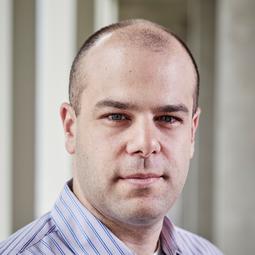
Recent work has shown that by targeting these metabolic differences, compounds are able kill leukemia cells without killing normal cells.
This study looks to better understand the how metabolic rewiring contributes to killing AML cells.
Findings from this research will improve our understanding of the processes involved in leukemia cell death and could greatly improve the lives of AML patients who are currently faced with limited treatment options and lower survival rates.

Ibrutinib is one of a class of drugs called “BTK inhibitors” that block the signals that tell cancer cells to grow. Unfortunately, BTK inhibitors do not cure because other signals can take over and cause resistance to the treatment.
This study will determine how a drug commonly used to treat arthritis (anakinra), which has been shown to block one of these other signals affects blood cancer cells treated with BTK inhibitors and whether additional signals are contributing to treatment resistance.
Findings will be used to justify clinical trials of ibrutinib and anakinra that may help increase cure rates in CLL and other blood cancers.

It is important to understand how and why cancer cells adapt and become resistant to cancer therapy if we are to develop better treatments.
This study investigates a keyway that cancer cells rewire the surrounding environment to survive and escape the effects of treatment.
Findings will leverage the knowledge and discoveries of novel biomarkers and/or therapeutic targets to develop more effective ways to treat AML and combat relapse.

This study looks to understand how LSCs are vulnerable, how they can be targeted and the unique role of the PLK1 protein in LSC function.
Findings will be used to identify vulnerabilities that can be targeted therapeutically to overcome drug resistance and enable the development of safer and more effective drugs and drug combinations to improve outcomes for AML patients.

There is a pressing need to develop better therapies for MDS/AML as the Five-year survival rate is significantly lower for AML (23%) than for all leukemias combined (61%).
Mutations in one gene, called DDX41, are associated with both MDS and AML.
This study will identify and validate targets that selectively kill DDX41-mutated leukemia cells.
Findings will lead to the development of better therapies based on potential drug targets for DDX41-mutated MDS/AML.
The Blood Cancer Discoveries Grant Program, in partnership with the Leukemia & Lymphoma Society (US), provides funding to Canadian researchers. It supports cutting edge, innovative research that is discovery oriented, concerned with understanding blood cancer properties and vulnerabilities and aimed toward advancing treatments for blood cancers. This program is intended for established academic investigators for support of foundational, early-stage research that can lead to advances in the treatment and cure of blood cancers.

Most acute myeloid leukemia (AML) patients who receive therapy will respond, however, their leukemia usually returns. Consequently, there is an urgent need to develop new therapies for relapsed patients.
Preliminary findings from Dr. Jones’ research team show that relapsed AML cells are dependent on a molecule called glutathione (GSH), which changes the function within these cells. Importantly, inhibiting GSH does not affect normal blood cells, suggesting it could be a target for a new AML therapy with limited side effects.
In this project, the research team aims to understand and target properties specific to relapsed AML cells, which will enable the discovery of new therapeutic targets for relapsed AML patients.
In the current era of targeted and immuno-oncology drugs being developed for adults, very few successful examples have been translated to childhood blood cancer treatment.
While advances have been made in this arena, cure rates remain low for certain blood cancer types and traditional therapies as associated with considerable long-term effects.
These projects will challenge the current pediatric blood cancer treatment paradigm to address gaps and improve outcomes.

IBMFS treatment requires a bone marrow transplant, which is associated with many potential complications and risks, especially in DC patients with lower immune cell counts. These patients are also at a much higher risk of developing leukemia.
The zebrafish has similar but more rapid blood development than humans, making it an ideal animal model for studying DC and how it evolves into leukemia.
This study looks at the effects of the DC gene in Zebrafish to help us understand how it affects blood production and causes leukemia.
Findings may be used to screen for drugs that can impact blood defects and potentially halt leukemia development.

These leukemias are caused by specific changes in the genetic code of blood cells that affect normal blood cell production, producing abnormal proteins that can be recognized by the immune system as foreign (because they are not normally produced by our cells).
This study looks to identify these abnormal proteins and use them as a target to treat infant leukemia with immune cells rather than toxic chemotherapy.
Findings may be extended to patients who have failed chemotherapy and eventually, immune cell therapies that specifically target leukemia cells may replace toxic chemotherapy.

Moreover, the prognosis in adolescent/adult T-ALL and in relapse T-ALL at all ages is appalling. Current chemotherapy has failed to control leukemia cells and damages healthy cells.
In this era of precision medicine, we can do better. We believe that any blood cancer patient would wholeheartedly exchange a two-year chemotherapy treatment protocol with a therapeutic vaccine.
This study will identify proteins that are only found on the surface of leukemic cells, called tumor-specific antigens (TSA) that can be targeted directly.
Findings will pave the way to precision medicine at its best, based on the unique capacity of the immune system to mount a highly specific immune response against targets that are only detectable in leukemic cells while sparing normal cells.
In partnership with the Leukemia & Lymphoma Society (US), we are funding Translational Research Program (TRP) grants to put researchers on the bench-to-bedside fast track when it comes to finding better treatments and cures for blood cancers. Through this program, we are funding new and innovative research that shows high promise for translating basic biomedical knowledge to an application that can help those affected by a blood cancer.

While bone marrow transplantation can successfully treat and even cure blood cancers, its use is still limited because of the risk of a life-threatening, autoimmune complication called chronic graft-versus-host disease (cGvHD). This complication occurs when the donor immune system attacks healthy tissues in the recipient.
Using the expertise and data collected through the Canada-based Applied Biomarkers in Late Effects of Children and Adolescents with Cancer (ABLE) team, the research team will determine how well the pediatric cGvHD risk predictor and diagnostic classifier can be used with adult hematopoietic stem cell transplant (HSCT) data (ages 18 to 60 years).
The research team will use a multi-faceted approach to understand what leads to cGvHD in this adult population and, ultimately, decrease its occurrence.

B-cell lymphomas are the largest group of newly diagnosed blood cancers in North America. Despite significant improvements in treatment, a significant proportion of patients experience relapsed or refractory disease. Developing more effective and personalized treatments is, therefore, a pressing unmet need.
Dr. Steidl’s research team has found that genetic alterations in a pathway that regulates important aspects of the body’s immune function – the non-canonical NF-kB pathway – is found a many B-cell lymphomas. The finding suggests that these alterations could be targeted with new therapies.
In this project, the research team will identify the genetic mutations related to the pathway, define the weaknesses in the pathway and test combination immunotherapies.
2022 Research Investment
The COVID-19 pandemic affected researchers’ capacity to conduct their regular research and training activities. These one-time grants will provide a boost to blood cancer research that was stalled because of the pandemic.

Infant leukemia occurs in children less than one year of age and has poor survival rates due primarily due to the toxicity of current treatments. Infant leukemia is frequently the result of abnormalities in the lysine methyltransferase 2A (KMT2A) gene that is present on chromosome 11. The chromosome breaks at the region containing KMT2A and joins to genes (MLLT3 and MLLT1) on other chromosomes resulting in fusions. SomeKMT2A fusions with additional mutations in the gene lysine methyltransferase 2C (KMT2C) lead to a more rapid development of the disease.
For this study, the research team will use zebrafish models that have mutations in the zebrafish KMT2A gene and study whether either the KMT2A-MLLT3 or KMT2A-MLLT1 fusion impacts blood development and speeds up development of leukemia. The researchers will carry out drug screens targeting key disease pathways to identify potential new effective and safe treatments for this vulnerable group of patients.

Myelodysplastic syndromes (MDS) are a type of blood disorder with poor outcomes due to an increased susceptibility to infection and failure of blood production. Most importantly, one of every three MDS patients progresses into a lethal secondary disease called acute myeloid leukemia (AML). Today, there is no way to predict when MDS will worsen to AML and no clinical measures are available to detect or prevent it. This is mainly due to our lack of understanding of the disease process at the cellular level.
Previously, the use of a type of drug called “hypomethylating agents” showed encouraging but temporary effects in MDS and AML. However, these drugs have lots of non-specific effects and affect the expression of hundreds of genes at once that have unknown roles in disease or side effects.
Identifying specific areas of DNA that regulate a smaller and specific set of genes involved in MDS disease and evolution to AML would provide the knowledge needed to create specific drugs with long-lasting effects and fewer side effects like has been done for other cancers. The goal of this study is to identify the DNA regions and genes they control as new and very specific targets for development of entirely new therapeutics for MDS and AML.

Clonal Hematopoiesis of Indeterminate Potential (CHIP) refers to the presence of blood cells carrying mutations associated with leukemia in individuals without evidence of a blood disorder. Individuals with CHIP are at a substantially higher risk of developing blood cancers, including acute leukemia, than those without CHIP. The time from having CHIP identified to a diagnosis of blood cancer can be many years. This finding opens the intriguing possibility of interventions to prevent blood cancers. To achieve this goal, we need to first understand how normal and mutated blood cells behave differently. This knowledge will allow us to design effective and safe interventions.
One of the most common mutations in CHIP is in a gene called TET2. Dr. Chan’s research team recently discovered that blood cells with mutations in TET2 are more dependent on a hormone called thrombopoietin to grow and survive than are normal blood cells. This finding suggests that if thrombopoietin can be blocked, it may be possible to selectively destroy the mutated blood cells. Because these studies were done using artificial cells, the finding must be confirmed using human cells. In this project, the researchers will study if human blood cells with the TET2 mutation are also more dependent on thrombopoietin. If successful, the finding will help establish a potential approach for eliminating CHIP and, eventually, preventing blood cancers.
UFCW Special Recognition Award Recipient 2022

The long-term goal of this project is to develop a new model system that will have wide applicability to predict the response of AML to new therapies. This project will focus on a model that will simulate the widespread problem of the reappearance of resistant and usually lethal disease after an initial response to treatment. The immediate objective is to develop a system that mimics therapy-resistant AML cells after being exposed to a standard partially effective treatment.
In this first series of studies, the researchers will use a powerful new approach to characterize the subtypes of AML cells in samples and compare the results to what was seen in the lab, before and after exposure to the treatment.
The results will establish the feasibility of using this approach for future use of this model to identify treatments that prevent subsequent relapses from resistant, as opposed to incomplete elimination, of treatment-sensitive cells. This will then set the stage for creating new ways to anticipate, characterize and design improved methods to eliminate anticipated resistant AML cell types.

The goal of this project is to identify drugs that can target the rare cells that cause treatment failure in leukemia, specifically leukemic stem cells (LSCs). AML is sustained by LSCs that act somewhat like normal stem cells in that they are the ‘root’ of the cancer and need to be eliminated to achieve a cure.
Therapy for childhood and adult acute myeloid leukemia (AML) involves extremely intense and toxic treatments. This can impair the development of children and can cause long-term cardiac dysfunction, affect fertility and cause secondary cancers later in life. Even with this aggressive treatment, the majority of these patients do not respond to therapy, or the leukemia returns later. New treatments are desperately needed to improve the outcome and reduce toxicity.
The researchers have identified 15 compounds that can selectively eliminate LSCs. They will confirm the effectiveness of the best of these compounds against LSCs in a larger set of AML samples and test toxicity. This will allow for the selection of the best compounds for further study and development.

Standard of care in pediatric T-cell acute lymphoblastic leukemia (T-ALL) includes topoisomerase inhibitors, microtubule targeting drugs and corticosteroids that are administered over a two-year treatment regimen. Despite cure rates of 90%, the long duration of such drastic chemotherapy in pediatric patients has immediate as well as long-term consequences that irreversibly alter their quality of life. Moreover, prognosis is very poor in adolescent/adult T-ALL, as well as in relapse T-ALL at all ages. Treatment resistant disease suggests that current chemotherapy fails to target leukemic cell vulnerabilities.
In this era of precision medicine, the study aims to identify tumor specific antigens that can be used to trigger an immune reaction against these TSAs, which are absent in normal T cells and other normal cell types. The proposed work will pave the way to precision medicine at its best, based on the unique capacity of the immune system to mount a highly specific immune response against antigens that are detectable in leukemic cells only, sparing normal cells.
Acute myeloid leukemia (AML) is an aggressive cancer of the blood and its treatment remains challenging. High doses of chemotherapy, often accompanied by stem cell transplantation, can lead to a cure, but many patients are not eligible for this treatment due to advanced age or other health conditions.
The knowledge of the specific DNA alterations within AML cells has led to the development of specific inhibitors of altered proteins, leading to promising responses, especially for those with other medical conditions or relapsed disease. However, these responses usually don’t last long and, invariably, treatment resistance occurs.
Preliminary data from the research team suggests that, in AML cells, resistance to therapy occurs through the activation of a specific factor called eukaryotic initiation factor 4A (eIF4A), which promotes the expression of several pro-survival proteins. Furthermore, they found that treatment with an inhibitor of eIF4A decreases AML burden and enhances the effect of other known therapies.
Using these findings, in this project the researchers will characterize the mechanism of action of eIF4A inhibition and test the efficacy of new therapeutic combinations with eIF4A inhibitors. Their aim is to identify a new way of treating AML that could enhance current therapies and prevent resistance to treatment.
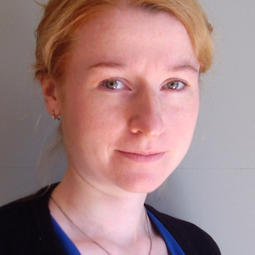
The protein cMYC is a major regulator of gene expression and the genetic changes leading to cMYC hyperactivation occur in many cancers, including lymphomas. Such lymphomas remain difficult to treat and result in a poor disease prognosis.
In a previous study funded by the LLSC, the researchers demonstrated the cooperation of cMYC with another protein and enzyme called MYSM1 that regulates gene expression in cancer cells. Furthermore, they established that the loss of MYSM1 can delay lymphoma progression when cMYC is hyperactivated. This finding serves as a strong proof-of-concept for targeting MYSM1 in cancer cells as a novel therapy for cMYC driven lymphoma.
Immunotherapy is revolutionizing cancer treatment in the clinic. Importantly, MYSM1 is an important regulator of gene expression not only in cancer cells but also in immune cells. However, its role in anti-tumour immunity remains unknown. In this current study, the researchers will assess the effects of targeting MYSM1 on the immune cell functions and anti-tumor immunity in cMYC lymphoma models. This represents the essential next step for further translational development of their research – to establish MYSM1 as a drug target for cMYC driven lymphoma.

Dr. Paige and his research team began to treat leukemia with a novel form of immunotherapy prior to the onset of COVID-19. In this form of immunotherapy, leukemia cells were obtained from a patient and engineered to secrete a molecule called interleukin 12 (IL-12). IL-12 is a powerful immune stimulator that, in fact, is too strong to simply directly inject. There is, therefore, a worldwide effort to find less toxic ways to introduce IL-12 to the site where a leukemia cell meets the cells of the immune system.
The team has had great success, in experimental systems, in enabling the leukemia cell to do this itself. This is accomplished by treating the leukemia cells with a viral vector that introduces the gene for IL-12. These modified leukemia cells are then returned to the same patient where they appear to initiate an anti-leukemia immune response. Once activated, the immune system cells no longer require IL-12 and are free to kill other leukemia cells. To date the researchers have treated six participants in an early phase (phase 1) clinical trial designed to test the safety of this approach. They plan to treat six additional participants to complete this trial.

Ibrutinib is one of a class of drugs called BTK inhibitors that form an important new treatment for blood cancer. Unfortunately, these drugs are unable to cure the disease on their own. Dr. Spaner’s group has found that a protein called IL10 kills blood cancer cells when ibrutinib is present. However, ibrutinib decreases IL10 levels, which may be an Achilles heel for BTK inhibitors.
In this project, Dr. Spaner will examine the ways that IL10 affects blood cancer cells in the presence of ibrutinib. He will also determine if infusing IL10 together with ibrutinib can be a safe and more effective way to treat blood cancers. Cancer cells from patients with chronic lymphocytic leukemia (CLL) will be studied in this project.
The results of this project are expected to support using ibrutinib and IL10 to treat CLL. This approach is expected to increase cure rates in CLL and many other forms of cancer.

Follicular lymphoma is a slow growing but incurable cancer of the lymph nodes. It can spontaneously transform to a more aggressive form of lymphoma requiring chemotherapy. Mutations in certain genes occur frequently in follicular lymphoma, but how these mutated genes interfere with normal cell function remains poorly understood.
To study how these mutated genes operate in human cells, the research group will introduce them into normal lymph node cells that have been obtained from biopsy cells. The researchers will test the effects of the mutated genes in these biopsy cells using a new kind of assay (an investigative procedure) where cells are grown in the lab as miniature organs, or “organoids”, that more accurately recreate the conditions of a lymph node in the human body.
The team will test a new idea that specific gene mutations alter the cell’s DNA in a manner that results in the faulty repair of naturally occurring breaks in the DNA strands, leading to uncontrolled expression of mutated genes. By understanding exactly how these genes change the cell’s DNA, the researchers will be able to correct the problem and allow the cell’s normal repair mechanisms to function properly again. The results from this work can be more directly translated to new therapies because they have been tested in cells that have come directly from patients.

Myelodysplastic syndromes (MDS) are a group of blood cancers of the blood and bone marrow. With MDS, the bone marrow does not produce enough healthy blood cells. About 30% of MDS cases progress to acute myeloid leukemia (AML).
The mainstays of MDS/AML treatment are chemotherapy with azacytidine and cytarabine, which have been in use for more than 40 years. However, the survival rate is low, so there is a pressing need to develop better therapies.
Mutations in the DDX41 gene are associated with MDS and AML and the mutation R525H is the most frequently identified mutation in patients. Recently, the research group found that the DDX41-R525H protein affects cell function in a way that that causes excessive innate immune activation, which has implications in cancer initiation and progression. This has led the research team to study the development of specific inhibitors for R525H protein.
The researchers will attempt to identify new molecules that selectively kill leukemia cells by targeting DDX41. The findings could result in potent drug target DDX41 for MDS and AML treatment.
Quality of life issues for blood cancer patients have been less well studied than other areas of care. There are many medical and non-medical consequences of treatments that vary with age, sex, gender, ethnicity, type of blood cancer and treatment.
The intent of this funding opportunity is to support new research designed to address quality of life challenges experienced by Canadians affected by blood cancers. Quality of life cancer research has the potential to make a significant impact on the burden of disease in patients, survivors and caregivers.

It can be hard for hematologists to predict when their patient is close to death. This may mean that discussions about end-of-life (EOL) care can happen too late, which can impact the quality of care.
To better support these individuals and their families facing this circumstance, the researchers will test an artificial intelligence (AI) tool that has been shown to predict when individuals with a general cancer are at highest risk of death. In this study, the AI tool will be used with those experiencing a blood cancer to identify those who are at highest risk. The healthcare team will then use a serious illness conversations guide to support discussions about EOL care and patients will be interviewed to determine how support can be improved.
Ultimately, the timely identification of those at high-risk, use of the guide, and refining of quality of life-EOL markers through feedback will allow the healthcare team to work with patients and their families to structure an EOL approach to suit the needs.
Funded in partnership with the Canadian Cancer Society
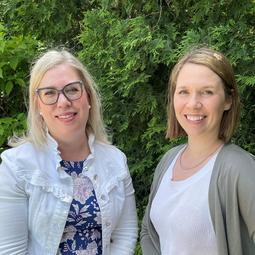
Sleep disruptions and unrelenting fatigue are commonly reported after the end of treatment for a blood cancer. In addition to its immediate impact on an individual’s daytime activity, poor sleep could also affect their quality of life. The PROSLEEP study will provide the first thorough exploration of sleep in recently treated blood cancer patients and its connection to fatigue and quality of life. In this study, the research team will monitor the rest and activity cycle of study participants. Those individuals with unresolved sleep problems will be offered tools and strategies to help improve their sleep. The results of the study will be used to further refine these tools and strategies in preparation for a future randomized controlled clinical trial.
Funded in partnership with the Canadian Cancer Society

Lymphoma patients who experience relapse after treatment or do not get into remission (refractory) respond poorly to standard chemotherapy. While autologous stem cell transplant (ASCT) has traditionally been the treatment of choice, chimeric antigen receptor T-cell (CAR T) therapy has emerged as a new standard of care for relapsed or refractory (RR) B-cell lymphoma.
This study aims to understand the survival benefits and the impact of these treatments on quality of life which may inform decisions regarding treatment and supportive services. The researchers will evaluate quality of life outcomes among adults who were treated for RR B-cell lymphoma with either ASCT or CAR T using feedback from the individuals who have received these treatments. The analysis of the results will generate a new understanding about the long-term quality of life outcomes among this population, which will help in the development of interventions for early identification those at high-risk and supportive care measures.
Funded in partnership with the Canadian Cancer Society

Multiple myeloma and indolent (slow growing and slow spreading) non-Hodgkin lymphoma are incurable blood cancers. Individuals with these cancers suffer from many symptoms and a poor quality of life at multiple time points during their cancer experience.
The researchers will use a dynamic model to predict outcomes at different points in time during a cancer experience. This model will be developed with the input of patients, caregivers, and healthcare providers. The goal of the study is to provide information that will help guide meaningful discussions and help plan for future cancer needs and to, ultimately, improve future quality of life for this group.
The study will test a new way to predict how these cancers will progress, including:
• Survival
• Ability to perform tasks required for independent living
• Moderate to severe symptoms of pain
• Depression
• Overall well being

People who require an allogeneic stem cell transplant (cells from a donor) for leukemia and lymphoma have to undergo very aggressive treatment prior to their transplant.
As a result, they have devastating physical and psychological side effects during and for years after the procedure. The situation is worsened by the fact that many receiving this type of treatment live several hours away from treatment and transplant centres, leaving them on their own to manage debilitating side effects.
In this qualitative study, Dr. Pituskin and her team aim to learn about the experiences of people undergoing an allogeneic transplant when they receive access to a supportive care app and telephone support from nursing, exercise and nutrition experts. The aim is to determine the most helpful type and best timing of supportive care from those who have first-hand knowledge.
Funded in partnership with the Canadian Cancer Society

Survivors of childhood, adolescent and young adult blood cancers are at high risk for a variety of health problems long after their treatment ends. As such, they must be monitored for a long time to detect and care for health problems that may develop.
To ensure that they are receiving the most effective care, these young survivors face transition to one or more healthcare providers. Currently, this transition of care is not well researched and there is no clear definition of what constitutes the successful transfer of care. For this project, a team of patient partners, physicians and researchers will work together to help define what represents the successful transition of care among young blood cancer survivors. The results of this work will be used to improve not only their care, but also the outcomes of their care (e.g., quality of life).
The Clinician Scientist Fellow Award encourages early-stage specialist clinicians to pursue a career in blood cancer research. This opportunity is designed to foster the acquisition of skills and independence to conduct research in blood cancers in the laboratory, in the clinical setting or at combined levels. This program is offered in partnership with the Canadian Institutes of Health Research (CIHR).

Aggressive B-cell lymphoma is a cancer of the immune system that can develop rapidly and require urgent treatment. This project will use a detailed genetic analysis of lymphoma samples to help better predict which individuals will not respond to current treatments so that their treatment can be improved. The results will also be used to discover new treatments that target the genetic defects in these cancers.
Funded in partnership with the Canadian Institutes of Health Research – Institute of Cancer Research
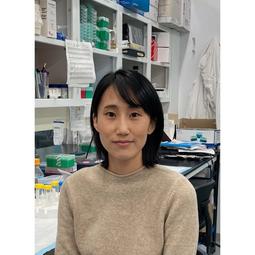
Cancer immunotherapies that engage and redirect host T cells to target tumours have revolutionized the field of oncology. T cells play an essential role in controlling the growth of cancer cells. In multiple myeloma (MM), when T cells malfunction, it allows the uncontrolled spread of abnormal plasma cells.
Targeting the B-cell maturation antigen (BCMA) of plasma cells with chimeric antigen receptor T cells (CAR-T) or bispecific T cell engagers (TCE) has been shown to effectively treat advanced myeloma.
Despite these encouraging clinical results, these new treatments do not work for all patients. This highlights the importance of understanding how MM cells are evading these immunotherapies.
The goal of this project is to perform an in-depth examination of T-cells in MM myeloma.
This will lead to an improved understanding of the bone marrow of those with MM who respond to TCE therapy versus those whose MM does not respond to treatment. This knowledge can be used to help in making decisions on the timing and selection of treatment.

Follicular lymphoma (FL) is a common blood cancer and its development can vary significantly. Reliable tools (biomarkers) to identify those individuals with FL at higher risk of death from lymphoma are needed to provide the most effective care. Using sophisticated techniques to profile the genetic changes in FL and interactions between FL cells and normal cells, the researchers aim to develop new ways to predict FL disease behaviour and guide targeted therapies.

When a blood stem cell, which can develop into different types of blood cells, starts producing mutated cells it is a condition called clonal hematopoiesis. The research team has discovered that one type of clonal hematopoiesis triggers the immune system to help fight cancer. They will test whether clonal hematopoiesis can help to identify those who respond to immunotherapy and define how it supercharges immunotherapy treatments. The findings could help match future patients to the most effective therapies and may lay the foundation for new immunotherapies for cancers, including leukemia and lymphoma.
Funded in partnership with the Canadian Institutes of Health Research – Institute of Cancer Research
The LLSC is pleased to partner with Cancer Research Society to co-fund ten (10) blood cancer projects from the CRS 2021 Operating Grant Competition.
The grants that focus on advancing the understanding of and improving treatment options for all blood cancers.

Acute myeloid leukemia (AML) is an aggressive blood cancer that responds poorly to current treatments. A new class of medications known as IDH inhibitors have recently been approved for the treatment of AML patients with mutations in genes called IDH1 and IDH2. Although these drugs are effective for some patients, many do not respond at all or lose their response over time. There is a need to understand why this happens and find ways to make these drugs more effective. We recently discovered that activation of a protein called SYK may be the reason why some AML patients do not respond to IDH inhibitors. In our research proposal, we will build on these findings by studying how changes in SYK activation affect the response of human AML cells to IDH inhibitors. We will also study if blocking SYK activation with another drug can make AML cells respond better to IDH inhibitors. We anticipate that our findings will help discover new ways to improve the efficacy of IDH inhibitors and outcomes of AML patients.
Toronto ON
Canada

The latest advancements in cancer therapies weaponize the patient’s own immune system fight the cancer cells as if they were foreign invaders such bacteria or viruses. One current therapy uses chimeric antigen receptor (CAR), which enables the immune cells to recognize cancer cells, leading to the destruction of the targeted cells. These therapies shown great success in treating patients with various types of leukemia, but this approach has been fraught with severe side effects. The novel CAR architectures proposed in this research address the shortcomings observed for current CAR technology, which should lead to a significant improvement in tumor clearing while minimizing unwanted side effects and complications. Ultimately, the added efficiency and safety of these new mCARs (modular CARs) will not only improve patient outcomes, but has the potential to reduce bed-side costs typically associated with complications to CAR therapy to make it amendable to government-subsidized healthcare plans such as those found in Canada.
Montreal QC
Canada

Chemotherapy with stem cell transplantation is often the only curative treatment for leukemia patients. Unfortunately, white blood cells contained in the stem cell transplant can attack the patient. This condition is serious, and several patients die every year. Drugs currently used to treat this condition are not always effective. In addition, these treatments induce profound immunosuppression which increase the risk of developing lethal infectious complications. EGFL7 has the potential to decrease unwanted side effects of bone marrow transplantation. This proposal seeks to investigate the novel molecule (EGF7) to improve the safety of bone marrow transplantation to cure leukemia.
Montreal QC
Canada

Treatments and outcomes for patients with blood cancers have substantially improved over the past decade due to the development of new drugs. However, a large cohort of patients often develop resistance following continued drug treatment, leading to poor clinical outcomes. One emerging approach is to target a protein called histone deacetylase 6, (HDAC6) which has shown to mediate chemotherapeutic resistance and can re-sensitize tumors to standard-of-care treatments. Although, there are 4 FDA-approved drugs that target HDAC6 on the market, they are unselective and target HDAC6 in addition to another 10 similar HDAC proteins. This leads to severe toxicities in patients. Newer drugs in Phase I and II clinical trials, have shown modest 5-6 fold selectivity for HDAC6. Here, we have synthesized small molecule inhibitors that have shown exquisite HDAC6 selectivity (>150 fold). We aim to expand on our current chemical scaffolds to further develop their drug-like properties, and evaluate their efficacy in blood cancer models to design better treatments and hopefully improve patient outcomes.
Toronto ON
Canada
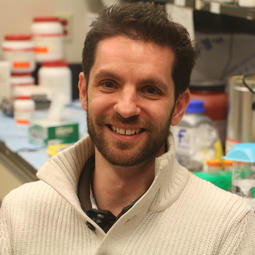
Cancer immunotherapies are being developed as a new type of treatment that act by boosting the natural capacities of the immune system and directing it to destroy tumors. Among the different types of cells comprising the immune system, macrophages have the capacity to eliminate microbes and cancer cells by engulfing and digesting them. However, in most patients, macrophages do not eliminate cancer cells and instead put a brake on the activity of the immune system against the tumor. Macrophages identify which cell to eliminate by testing their molecular and physical characteristics. Recent evidence suggests that the physical characteristics of lymphoma cells help them escape engulfment by macrophages. The goal of this project is to understand how macrophages could overcome the physical constraints involved in engulfment of lymphoma cells. Specifically, we aim to identify the two critical properties of macrophages for the engulfment of lymphoma cells: force transmission and cellular deformation. Understanding these molecular mechanisms will provide new strategies for the development of more effective immunotherapies that promote the eradication of lymphoma by macrophages.
Burnaby BC
Canada
The transcription factor Ikaros is frequently disrupted in B and T cell acute lymphoblastic leukemia (ALL) and is associated with poor clinical outcome. Chemotherapy drugs used in ALL treatment kill cancer cells by damaging their genetic material (DNA). Our previous results suggest that Ikaros interacts with a genomic structure call R-loop and Ikaros mutation results in the accumulation of R-loop, which can be toxic. We want to define whether Ikaros disruption promotes the accumulation of R-loops in ALL cells by investigating the mechanisms involved, protein partners of Ikaros and the effect of Ikaros disruption on genomic R-loops. We will address whether the disruption of Ikaros influences R-loop accumulation and genomic stability, and hence, could be fundamental to determine the therapeutic regimen to cure ALL characterized by the disruption of Ikaros.
Montreal QC
Canada

Interactions between molecules inside cells transmit signals that control normal cell functions. Disruption to these normal signaling pathways are at the root of many human diseases. One well established genetic mutation that causes leukemia, gives rise to the production of a defective protein called BCR-ABL that disrupts normal cell behavior. The consequence is uncontrolled growth of certain blood cells that cause the diseases Chronic Myeloid Leukemia (CML) and in B-cell acute lymphoblastic leukemia (B-ALL). Drugs that inactivate the BCR-ABL protein are effective in the treatment for leukemia but in some patients the drug stops working because the leukemia cells become resistant to its effects over time. The goal of our research is to identify new target proteins that will lead to the development of drugs that can be used to improve treatment of patients with B-ALL and CML as well as patients whose leukemia has become resistant to BCR-ABL inhibiting drugs.
Toronto ON
Canada

Cancer is a disease of uncontrolled cell proliferation, for which each cell must duplicate their genomic material. To replicate the genome, the cell must have sufficient availability of the four building blocks (or deoxynucleotides) that make the DNA. One of the deoxynucleotides, dTTP, is made in a special way and is limiting for cell proliferation. Cancer cells are more sensitive to drugs that poison DNA replication because of their rapid proliferation. A category of compounds very commonly used for this purpose resemble another one of the deoxynucleotides. When these compounds are incorporated into the DNA, they stop replication and kill the cell. The efficacy of this treatment is limited by enzymes present in the cancer cells that inactivate the compounds. We have identified CDADC1, a new enzyme of unknown function that might be important for the proliferation of certain leukemia cells, by facilitating dTTP production. We also found that CDADC1 increases the resistance to at least one of these anti-cancer compounds (gemcitabine) in cancer cells cultured in the laboratory. We will investigate the mechanism by which CDADC1 affects the toxicity of gemcitabine and similar compounds. Inhibiting CDADC1 could eventually improve the efficacy of gemcitabine and similar compounds against cancer.
Montreal QC
Canada

Dr. Rafei has been actively studying the biology of a bone marrow population subset known as mesenchymal stromal cells (MSCs). One of the main goals of Dr. Rafei’s group is to genetically engineer MSCs capable of mounting potent immune responses to eradicate established tumors while providing long-term protective memory protection. The data obtained so far clearly demonstrate that these engineered cells are superior to standard dendritic cells (the most powerful antigen presenting cell known so far) indicating that they can be effectively exploited for the formulation of new cellular-based cancer vaccines. Building on this success, the follow-up objective consists of further understanding the mechanism controlling the ability of these cells to effectively activate the immune system in order to design second or third generation cellular cancer vaccines.
Montreal QC
Canada

Childhood acute lymphoblastic leukemia is a form of cancer affecting mostly children under 15 years old. Sixty years ago, only 3% of children survived the disease. Thanks to scientific research, nowadays over 80% of children are cured, but survivors suffer from severe late adverse effects reminiscent of premature aging symptoms. Evaluating this premature aging involves many clinical tests and a lifelong clinical follow-up. Improving this evaluation would greatly improve survivors’ quality of life. We developed a test which measures a molecular marker named TREC. It is faster, less invasive than current tests and can be done with a single blood sample. In our preliminary experiments, we show that TREC are an effective marker of both normal aging and leukemia treatment-induced premature aging. We aim to better understand the clinical relevance of TREC and to evaluate new experimental treatments targeting premature aging to lower side effects and ameliorate clinical follow-up for childhood acute lymphoblastic leukemia survivors.
Montreal QC
Canada
LLSC is partnering with BioCanRx to help Canadian scientist expand their ability to conduct clinical trials of CAR T therapy. BioCanRx, Canada’s Immunotherapy Network, is a network of scientists, clinicians, cancer stakeholders, academic institutions, NGOs and industry partners working together to accelerate the development of leading-edge immune oncology therapies for the benefit of patients.

CAR T-cell therapy uses a patient’s own immune T cells to detect and kill cancer cells. The complex process involves extracting T cells from the blood and genetically modifying them in a lab to find and kill cancer cells. These supercharged cells are then put back into a patient’s bloodstream where they multiply and find and destroy cancer cells.
Until now, Canada has been without the laboratory facilities to modify these all-important T cells. BioCanRx’s Canadian-led Immunotherapies in Cancer (CLIC-01) trial is unique because it is the first ever to develop and manufacture CAR T cells in Canada. Currently, if a person is to receive CAR T therapy, their T cells are sent to a lab outside of Canada for manufacturing. The trial will help to expand the ability to manufacture made-in-Canada CAR T cells and, ultimately, improve access to this life-saving treatment.
Dr. Kekre has been leading the CLIC-01 trial, which treats patients with relapsed/refractory blood cancers. In this new study, Dr. Kekre has used facilities in Ottawa and Victoria to manufacture the CAR-T cells for this early phase clinical trial with patient sites in Ottawa and Vancouver.
Ottawa ON
Canada
2021 Research Investment
Our Operating Grants offer funding (up to $100,000/year) for two-years for basic research that contributes to the advancement of science aimed at preventing, detecting and treating blood cancers. These grants recognize scientists whose work will contribute to the tremendous momentum in blood cancer research and yield groundbreaking results in treating patients and extending lives.

Cancer cells, specifically chronic lymphocytic leukemia cells are charged with energy when compared to normal B-lymphocytes. We have identified that certain markers on the leukemia cells, such as one called ZAP 70, predicts which cells have higher energy levels. We do not, however, know what factors outside the cell or within the cells actually alter ZAP 70 to change the energy status of the cell. We believe learning this information is important for two main reasons: 1) It could be used to predict what doses of new drugs may best be used for patients to ensure they are working without side effects, and 2) Inform us how drugs should be combined to avoid side effects while maximizing the effect of treatment. By determining how to best assess energy changes in cancer cells under certain conditions, we can best learn about how different drugs “drain the batteries” of the leukemia cells.
Winnipeg MB
Canada

Aging is associated with the acquisition of small changes (mutations) in the genes of blood cells. Some of these mutations can give a growth advantage to the affected cells, which will outgrow the normal ones. This phenomenon is called Age-Related Clonal Hematopoiesis (ARCH). The presence of ARCH is associated with a 10-fold increased risk of developing a blood cancer such as leukemia, and it also doubles the risk of having a heart disease. This proposal will determine the role of inflammation as an initiator of ARCH but also as a factor of progression to cancer and/or cardiovascular diseases. Our results could lead to the development of a test allowing early identification of individuals at risk, and pave the way for the development of intervention strategies based on microbiota modification and/or anti-inflammatory treatment.
Montreal QC
Canada

The injection of immune cells (T-cells) grown in specialized laboratories can be very effective to treat blood cancers. Unfortunately, these immune cells can get “tired” and are less effective at killing cancer cells after their expansion in the laboratory. We have found that by blocking natural “brakes” on these cells, we can prepare large quantities of effective cancer-killing immune cells. We now seek to better manipulate these brakes to produce better cancer-fighting immune cells for therapy. This project is entirely oriented towards the treatment of blood cancers and will be relevant to all forms of T-cell immunotherapies. Based on our expertise translating innovative T-cell therapies in the clinic, we aim to provide better more effective cancer-killing T-cells to use as a treatment for blood cancers
Montreal QC
Canada

We are studying the most common form of adult leukemia called chronic lymphocytic leukemia (CLL). Though there are many new treatments available, there is still no cure for CLL. Cancer cells can release particles that contain material that act as messengers to the surrounding cells. We have found that CLL patients that have more particles in their blood have more aggressive disease. We will investigate if these particles are playing a role in the development of drug resistance. It is also possible that these particles could be changing the function of other cells in the body, creating an environment that makes it easier for the cancer cells to survive. Finally, we will use a 3D model of cellular tissues to see if blocking the release of these particles will increase the amount of cell death in the cancer cells. Drug resistance remains a significant clinical barrier to treat CLL patients. By understanding the role these particles play in promoting cell survival in CLL cells, effective therapeutic strategies could be developed to overcome drug resistance.
Winnipeg MB
Canada

Myelodysplastic syndromes (MDS) are a type of blood cancer that have poor outcomes and for which few therapeutic options exist. About 1/3 of MDS patients progress to an incurable acute leukemia, with the rest dying of bone marrow failure. One type of MDS (del(5q) MDS) is normally treated by a medicine called lenalidomide (LEN). However, more than half of these patients do not respond or stop responding to treatment, indicating a need for new therapies. Our goal is to determine whether MDS patients who are resistant to lenalidomide might benefit from blocking a cell signaling pathway called IGF1R. Our work will lead to the potential of new treatment options for LEN-resistant MDS patients
Vancouver BC
Canada

Non-Hodgkin lymphomas (NHLs) are the fifth most commonly diagnosed cancer in Canadians and the most prevalent of all the blood cancers. New treatment options are urgently needed for NHL in patients that have cancers that return following primary treatment. To date, novel drug development initiatives in NHL have been largely unsuccessful in identifying new agents to improve on standard of care therapies. It is known that aggressive lymphomas need a constant and increased supply of nutrients to fuel cell division and proliferation. In devising strategies to cut off nutrient supplies, we uncovered adaptations that allow lymphoma cells to survive leaner times. We believe that preventing access to the nutrient sources represents an attractive method to combat NHL. We have developed novel drugs that act by inhibiting lymphoma cells from adapting to stress for use as combination therapies thereby exploiting metabolic vulnerabilities.
Toronto ON
Canada

This proposal will focus on aggressive B-cell lymphoma, which represents the most common form of lymphoma in Canada, with over 4,000 new diagnoses per year. Identifying novel treatment strategies for these patients is a critical, unmet need, given that relapse occurs in 40% of patients and is often life-limiting. Our understanding of how lymphoma arises has significantly improved over the last decade. Novel drugs are now available that precisely target critical proteins that are important for lymphoma cells to proliferate and survive. However, lymphoma cells often find ways to develop resistance. Consequently, most novel drugs have relatively low response rates and, even when patients have responsive disease, the duration of the response can be short. In our research, we aim to identify optimal drug combinations as a means to more effectively treat lymphoma. We will focus on drugs that can be combined with inhibitors of two proteins, namely EZH2 and HDAC3. We will not only apply cutting-edge methods to identify novel combination partners, but we will also aim to understand the mechanisms that explain the synergy that we observe. Our ultimate goal is to translate findings herein into a clinical trial that can benefit patients.
Toronto ON
Canada

Despite improved therapies, the 5-year relative survival for acute myeloid leukemia (AML) is currently 21% in Canada, with especially unfavorable prognosis for elderly patients. Therefore, new treatments that target the root of AML, leukemic stem cells (LSCs), are necessary. The current standard of care in elderly patients with AML, a combination of Venetoclax and azacytidine, has significantly improved overall survival. However, one third of responders relapsed, suggesting incomplete eradication of LSCs and thus making further investigation critical. MicroRNAs (miRNAs) exert key functions in LSCs and their dysregulation affects prognosis and outcome in AML patients. Furthermore, modulation of miRNA levels has shown promising results in preclinical models. Here we explore targeting LSCs through inhibition of a cancer-causing microRNA cluster in combination with Venetoclax and azacytidine. The proposed combination potentially intensifies depletion of LSCs and therefore has clinical potential not only in AML but also in other cancers such as lymphomas, multiple myeloma and solid tumors.
Vancouver BC
Canada
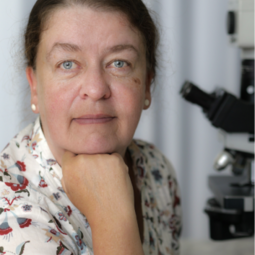
Inside our cells our genes are arranged along twisted, double-stranded molecules of DNA called chromosomes. At the ends of the chromosomes are stretches of DNA called telomeres which protect our genetic data, make it possible for cells to divide, and hold some secrets to how we age and get cancer. Telomere length maintenance is critical for cell division and cell survival. Normally, when telomeres reach a critical length the cells stop dividing and start to deteriorate and die. In Hodgkin’s lymphoma, however, the cells activate a protein called telomerase that maintains telomere length and prevents cell death. In this project, we will explore how Hodgkin’s Lymphoma cells maintain telomere length and then target their telomere maintenance pathways to prevent growth of cancer cells. We expect that treatments that target telomere maintenance pathways present in all cells of HL patients may alter the current treatment outcome of HL.
Winnipeg MB
Canada

Lymphoma is a cancer of the lymphocytes that can be treated with chemotherapy, but is often fatal once resistance develops. We profiled mutations in one type of relapsed lymphoma, diffuse large B cell lymphoma (DLBCL). Here we found that the protein STAT6 is more frequently mutated in relapsed samples than those taken when the disease is first diagnosed. STAT6 is a protein that binds DNA and controls genes important in lymphocyte survival. In our preliminary experiments, we found that cells with these mutations grow faster. This has led us to try to understand how mutated STAT6 leads to increased cancer cell growth. We will then test whether cells with the mutant STAT6 protein relapse more quickly following treatment with chemotherapy. Furthermore, we think that these tumors may respond to a new class of drugs targeting this pathway alone or in combination with chemotherapy. We believe that this mutant STAT6 protein is a marker for tumors who will not response well to chemotherapy, but also a marker for those tumors that might respond to these STAT6-targeted therapies.
Montreal QC
Canada

Many Acute Myeloid Leukemia (AML) subtypes consistently swap between the same chromosomes (called a translocation). At the time of diagnosis, the translocation is identified and can be monitored after chemotherapy to guide further treatment. This is called residual disease monitoring (RDM). A subtype of leukemia associated with translocations is Mixed Lineage Leukemia (MLL). In this project we are using MLL as a model to identify chromosomal translocations in acute leukemia. Diagnosis can be complicated and there is no established test for RDM in MLL leukemia. Our first aim is to use a novel technology called nanopore sequencing to identify chromosomal translocations involving the MLL1 gene. Our second aim is to use the nanopore sequencing results to develop patient specific probes for residual disease monitoring. If successful, this project will potentially allow us to develop a patient specific approach for residual disease monitoring in many diseases, not just AML.
Toronto ON
Canada

cMYC is an important regulator of gene expression and abnormal increase in cMYC activity is a major cause of cancer. In recent work we demonstrated that cMYC works together with another protein MYSM1 in the regulation of gene expression in the blood and immune systems. Loss of MYSM1 therefore can protect mice from cancers of the blood and immune system. The molecular mechanisms involved in the MYSM1 and cMYC interaction will be analysed in our proposed project. The long term goal is to determine whether inhibition of MYSM1 will also inhibit cMYC activity, and thus provide another potential treatment option.
Montreal QC
Canada

Inflammation is tightly linked with the development and progression of cancer. Among the inflammatory components participating in these processes are platelet cells. Platelets, initially discovered as clotting agents, are the second most abundant circulating blood cells in the human body. Interestingly, platelets also shed small vesicles (similar to escape pods) which package biologically active molecules. We have recently identified a new type of these vesicles, termed mitoMPs. These mitoMPs contain mitochondria which are known as the power and energy producing components of every cell. Our preliminary results show that mitoMPs bind and get enveloped by leukemia cells to transfer their content (mitochondria). As a result, these cancer cells have greater viability and have increased resistance to cellular death. We believe that mitoMPs represent important cancer modulators which will result in increased disease progression. In this study, we propose to define the significance of mitoMPs in chronic lymphocytic leukemia (CLL). Most importantly, we will determine the disease mechanisms which will then allow for the development of new strategic therapeutic approaches.
Funded in partnership with the New Brunswick Health Research Foundation (NBHRF).
Moncton NB
Canada

Targeting the ubiquitin E1 ligase, UBA1, in AML
TAK-243 is a new drug that blocks the cell’s garbage disposal system. We have shown that TAK-243 kills AML cells in culture and mouse models while sparing normal cells. Based on these data, we propose a clinical trial of TAK-243 in patients with refractory AML. In support of this clinical trial, we will develop a laboratory-based test to determine whether TAK-243 can bind and inhibit its target. We will also investigate mechanisms by which cells become resistant to TAK-243. Finally, we will test new drug combinations that could enhance the ability of TAK-243 to kill AML cells while continuing to spare normal cells.
Toronto ON
Canada

Lymphomas are the 5th most common cancers in Canada. The current standard of care in many B cell lymphomas consists of chemotherapy and therapeutic monoclonal antibodies, and has significantly improved patient outcomes over the past 15 years. A large proportion of patients, however, suffer from refractory or relapsed disease. Therefore, the development of new therapeutic strategies for these patients represents an important unmet clinical need. We will investigate the roles of a new gene, PRAME, which is frequently deleted in patient’s tumors. However, the functional role of PRAME down regulation remains unknown. We will study how these deletions lead to lymphoma formation and how tumor cells escape from the patients’ own immune system surveillance, thus aiding in the development of new therapeutic avenues to simultaneously treat the tumor and the host.

Co-applicants: Dr. James Whitlock, Dr. Sonia Cellot, Dr. Daniel Sinnett, Dr. Stephen Couban
While cure rates for childhood acute lymphoblastic leukemia (ALL) have improved significantly in the current era, relapse remains the most common cause of treatment failure and death. Teenagers and young adults with ALL have a worse outcome compared to younger children. Advances in cancer genetics have recently made several important discoveries, such as the identification of a particular group of patients who display a “genetic signature” similar to that of Philadelphia (Ph) chromosome-positive ALL but lacking the Ph chromosome. This is known as Ph-like ALL, and comprises approximately 15% of childhood ALL and over 25% among adults with ALL. Despite modern chemotherapy regimens, this group has poor survival rates compared to those without the “Ph-like” signature. Testing for Ph-like ALL remains limited in Canada and about 500 ALL patients do not have access to such testing each year. Given the poor prognosis and the possibility for outcome improvement, the main goal of this study is to develop a national screening program for Ph-like ALL using a novel sequencing technology. This screening will allow identifying Ph-like ALL patients who could benefit from the addition of TKI in combination with conventional chemotherapy in order to improve their outcomes.
Montreal QC
Canada

Late neurocognitive deficits in ALL survivors: DNA methylation biomarkers
Treatment of childhood leukemia is very effective; however, treatment can interfere with normal brain development in up to 50% of children treated. Brain functions such as attention, memory and intelligence can be affected leading to problems with learning and social skills. Importantly, these effects may only appear years after treatment has ended and are therefore called late effects. Our recent research suggests that patterns in epigenetic markers, i.e. changes to the DNA that controls whether genes are turned on or off, can help us understand how late effects develop in leukemia survivors. These epigenetic markers are stable over the years following treatment and have the potential to be used as a predictive tool for damaging effects on brain development. Our study aims to identify epigenetic markers in bone marrow cells collected during routine testing early in chemotherapy treatment to learn more about the possible causes of late effects. This information could help us predict which children are most susceptible to late effects. Additionally, these findings will enable the advancement of our understanding of the mechanisms of late effects, the development of early biomarkers, and the potential for early more personalized interventions.
Toronto ON
Canada

In current CAR-T cell therapies, mature T-cells are collected from the patient’s blood, engineered to kill leukemia and lymphoma cells, and transplanted back into the patient. Successful implementation of this strategy is limited by high treatment costs, low cell yields, and long-term safety concerns. Many CAR T-cells recognize both cancerous and healthy cells, causing undesirable side effects. A ‘universal’ source of progenitor (pro) T-cells engineered to target certain cancer cells could be transplanted into the patient where they would develop into mature T-cells that would be tolerated by the patient’s immune system, thus minimizing the potential side effects. We have developed a way to grow proT-cells from stem cells and aim to demonstrate that CAR proT-cells are an effective way to treat blood cancers. Optimization of CAR-proT therapy should reduce targeting of healthy tissue, reduce side effects, and increase potency against many types of leukemia and lymphoma. Furthermore, development of proT- cells would allow for scalable production of ‘off the shelf’ cancer immunotherapies which would result in lower costs for patients.
Vancouver BC
Canada
In the current era of targeted and immuno-oncology drugs being developed for adults, very few successful examples have been translated to childhood blood cancer treatment.
Clear advances have occurred, but cure rates remain low for certain blood cancer types, along with considerable long-term effects from traditional therapies.
These projects will challenge the current pediatric blood cancer landscape and address unmet needs for pediatric blood cancers.

Survival for children with B-cell acute lymphoblastic leukemia (B-ALL), the most common cancer of childhood, is now greater than 85%. However, treatment of ALL in the central nervous system (CNS; brain and spine) remains a major challenge. It is understood that ALL cells can invade the CNS. In fact, introduction of preventative CNS irradiation and injection of chemotherapy drugs into the fluid surrounding brain and spine provided the first breakthrough in the development of a successful leukemia treatment.
The challenge now is to solve two main problems:
• Understanding how ALL cells gain access to the CNS and which children are at highest risk
• Developing better treatments to block CNS invasion that are less harmful to the development of children’s brains
The research team has discovered two new routes of ALL entry into the CNS. Most importantly, they have demonstrated that potential new drugs that can block these entryways have worked. They now will work to gain a better understanding of how ALL cells invade the CN and develop a better test to predict which children are at greater risk for this problem. The results of the research will support future clinical trials of new drugs that prevent and treat CNS relapse more effectively and provide better quality of life for survivors.

Childhood leukemia is a challenging setting to explain the origins of leukemia, since the first genetic alterations occur during pregnancy.
Down syndrome (DS) is caused by the presence of an extra chromosome 21 (trisomy 21-T21) and DS children have a 150-fold increased risk of developing a pre-leukemia syndrome that often evolves to leukemia. The research team’s recent landmark DS study demonstrated that DS pre-leukemia arises only from rare hematopoietic (blood) stem cells (HSC). What remains unclear is how T21 can lead to HSCs becoming cancerous.
Dr. Dick and his team propose that malfunctioning cilia (hair like structures found on the cell surface)
may play an unappreciated role in DS blood cells and DS abnormal hematopoiesis (formation of blood cells). However, hematological function or malignancy have not been previously linked to cilia defects.
As a first step, the researchers will examine ~120,000 single blood progenitor (immature) cells with state-of-the-art DNA structure, RNA and protein analyses to reveal differences between DS and normal human blood cells. The aim of the study is to provide insight into the influence of trisomy 21 on leukemia development.

Modern chemotherapy regimens can cure acute lymphoblastic leukemia (ALL) in most children, adolescents, and young adults. Unfortunately, outcomes remain poor for children whose ALL is caused by certain high-risk genetic mutations, known as Ph-like ALL. This subtype occurs very commonly in children and is more frequent in individuals of Hispanic/Latino and Indigenous ancestry. Ph-like ALL often comes back even with the best available chemotherapy.
A new targeted therapy called ruxolitinib was created to block an important pathway that contributes to the cancerous behaviour of Ph-like ALL cells. A phase 2 clinical trial is ongoing to test whether adding ruxolitinib to chemotherapy can decrease relapses in children with Ph-like ALL. However, some children have already relapsed, suggesting that their leukemia cells found a way to outsmart the drugs and become resistant.
In this project, the researchers are studying blood and bone marrow samples from pediatric Ph-like ALL participants in the clinical trial. They hope to learn why leukemia cells can sometimes outsmart the drugs and lead to relapse, either by developing DNA mutations or rewiring the pathways inside the cells to hide from the drugs. The results will be used to identify new therapies that attack other leukemia cell targets with a goal of overcoming or even preventing resistance to ruxolitinib in patients with Ph-like ALL.
Funded in partnership with Kindred Foundation

Acute lymphoblastic leukemia (ALL) is the most common childhood cancer. Modern treatments have led to a remarkable improvement of cure rates, shifting the focus of the research toward decreasing the toxicity burden of chemotherapy. Intensive anti-cancer treatment leads to serious adverse drug reactions (ADRs) and even to long-term side effects. Genetic factors may influence the child’s risk of developing treatment-related toxicities.
This project will analyse the genetics of ADRs in childhood ALL. The researchers have identified genetic variations through previous studies, but they do not yet know if these genetic variations can help predict ADRs and how they can be used to better adjust treatment. This study addresses these questions and will provide important insight of how a person’s genetics can affect the response to certain drugs, leading to better treatment of childhood ALL patients.

Acute myeloid leukemia (AML) is a blood cancer with poor outcomes. Currently, treatment still relies on chemotherapies which have an impact on the physical and mental development of children.
COVID-19 and mRNA-based therapeutics used to treat it have changed the world. Key to their success was the encapsulation of mRNAs within liposomal nanoparticles (LNPs).
Dr. Kuchenbauer’s research group and others have recently highlighted the potential of microRNA (miRNA) encapsulated LNPs to target specific mutations in leukemias, with fewer side effects. The team’s previous data showed that miR-193a (a gene associated with cancer) is significantly decreased in pediatric normal karyotype AML (CN-AML). In CN-AML, it has been shown that engineered over-expression of miR-193a slowed down the development of AML.
An LNP-miR-193a-3p-based drug (INT-1B3) is currently being studied in a clinical trial for solid tumours and the researchers will be testing this drug in pediatric CN-AML models. They aim to pioneer novel LNP-miRNA-based formulations for the treatment of pediatric AML. This innovative approach will help to reduce the chemotherapy burden on children, improve treatment outcomes, and help to foster normal development in a frail and underserved population.
Funded in partnership with Kindred Foundation

Acute myeloid leukemias (AML) are hard-to-treat cancers that originate in the bone marrow following the development of mutations (changes) in normal blood stem cells. In approximately 25% of children diagnosed with AML, cancer cells migrate to the central nervous system (CNS) where they can potentially cause long-term neurological consequences. These patients need to be treated more intensively to prevent CNS relapse. However, the characteristics of the rare CNS infiltrating cells are very poorly described.
In this study, the researchers will evaluate if they can better diagnose CNS-infiltration in pediatric AML and further their understanding of this complication. They will assess whether a technique called single-cell RNA-sequencing can help in the diagnosis of CNS-infiltrating cells in pediatric AML, especially in cases where very few cells are identified by microscopic evaluation.
The study will determine whether single-cell RNA-sequencing can help identify those with pediatric AML with CNS infiltration, who could potentially benefit from more intense treatment. It will also provide a first exploration of gene expression and mutations specific to CNS infiltrating cells in this disease.

Acute lymphoblastic leukemia (ALL) is the most common cancer in children. Hyperdiploid (HD) ALL accounts for about 20% of pediatric leukemia diagnoses each year and responds very well to current treatments.
This success, however, often obscures the reality that HD-ALL remains the largest single contributor to ALL relapse. Cure rates for children with relapsed HD-ALL are less than 50% and new treatment strategies are needed.
In this study, the researchers aim to investigate the biology of HD-ALL in order to identify new types of therapy. To achieve this, they will use a unique model which will enable them to perform previously difficult experiments to track leukemia development from its very beginning. This will allow the researchers to identify changes common to all the abnormal cells in HD-ALL. The results of this study could identify effective ways to reduce the incidence of HD-ALL relapse by eradicating the leukemia cells that are not sensitive to current treatments.

Bone marrow transplantation (BMT) can cure blood cancers. While transplanting donor marrow has become substantially safer and more effective in the last few decades, its use is still limited because of the risk of a life-threatening, autoimmune complication called chronic graft-versus-host disease (cGvHD).
This complication occurs when the donor immune system attacks healthy tissues in the recipient. To learn more about who is at most at risk of developing cGvHD and which treatments are best-suited for each patient, the Canada-based Applied Biomarkers in Late Effects of Children and Adolescents with Cancer (ABLE) Team has been working to identify biomarkers (a biological molecule that signals a process, condition or disease). The ABLE studies have shown that the enzyme sCD13 is elevated in cGvHD.
In this project, the research team will investigate how sCD13 may affect immune cells and contribute to cGvHD. They will also study if the drug Bestatin (which inhibits sCD13) prevents development of cGvHD. If the team can show that inhibiting sCD13 can eliminate cGvHD they will be poised to start a clinical trial to determine if this approach can minimize the incidence and severity of cGvHD and make BMT a safer cure for children and adolescents.

Hodgkin lymphoma (HL) is one of the most common cancers in children, adolescents and young adults (AYA). Although survival for HL patients has improved remarkably over the past decades, for those who have tumours that return after treatment, outcomes are less optimistic. Additionally, treatment-induced side effects, such as infertility, secondary cancers and heart disease, represent a serious issue for young HL survivors. For that reason, research into the biological markers pointing to the risk of treatment failure is a high priority with the aim of achieving longer survival while reducing side effects.
In this study, the research team will decode the tumour-microenvironment (TME) ecosystem in HL biopsy samples using a new technology called imaging mass cytometry (IMC). They will perform a comprehensive IMC analysis on biopsies which will allow them to uncover clinically meaningful variations in cell composition of the TME to better understand the biology of pediatric and AYA HL the aim is to translate biological findings into diagnostic tests that can be used in routine clinical practice for personalized treatments with higher cure rates and less toxicity.
The intent of the Clinician Scientist Fellow Award is to encourage early-stage specialist clinicians to pursue a career in blood cancer research. This opportunity is designed to foster the acquisition of skills and independence to conduct research in blood cancers at the laboratory, clinical or combined levels.
The Leukemia & Lymphoma Society of Canada, in partnership with the Canadian Institutes of Health Research (CIHR), is pleased to announce the recipient of the 2020 Clinician Scientist Fellow Award, Dr. Ryan Stubbins.
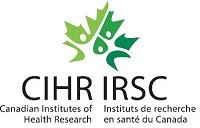
Myelodysplastic syndrome (MDS) and acute myeloid leukemia (AML) remain significant clinical challenges, with only a fraction of patients achieving long-term survival. The most commonly used therapy in North America is 5- azacitidine (5-aza), and while 5-aza benefits some patients, 40% of treated patients have no response. It is not understood why patients become resistant to 5-aza and so, given the importance of 5-aza in MDS/AML therapy, it is important to understand the mechanisms of 5-aza resistance. The goal of this project is to understand both why patients are resistant to 5-aza, and to provide insights to develop future novel therapies.
Vancouver BC
Canada
In partnership with our American affiliate, Leukemia and Lymphoma Society (US), we offer career development awards to postdoctoral fellows and instructors, as well as early-career independent investigators, engaging in basic, translational, or clinical research to help understand and treat hematologic malignancies and relevant premalignant conditions.

Leukemia is the most common cancer in children, accounting for almost 1 out of 3 cancers. It is even more prevalent in children with Down syndrome, a chromosomal abnormality caused by a third copy of chromosome 21. In particular, children with Down syndrome have a 150-fold increased risk of developing acute myeloid leukemia during the first years of their childhood. In 30% of newborns with Down syndrome a transient pre-leukemia disease occurs. During this pre-leukemia phase, immature white blood cells called megakaryoblasts divide uncontrollably and can cause damage to several tissues, but in most patients it resolves spontaneously. However, in 20% of these cases, the pre-leukemic disease later returns and progresses into full acute myeloid leukemia. The overall aim of the proposal is to understand why an extra copy of chromosome 21 predisposes Down syndrome children to leukemia and to understand the mechanism of leukemia initiation and progression. Dr. Wagenblast’s long-term vision is to prevent the progression of pre-leukemia to acute myeloid leukemia by specifically removing the pre-leukemic cells. This could serve as a general prevention strategy in Down syndrome children diagnosed with pre-leukemia.
Toronto ON
Canada
In partnership with the Canadian Cancer Society (CCS), we are funding an exciting research project through the Novel Technology Application in Cancer Prevention and Early Detection program. The intent of the program is to “spark” and accelerate new activity in the development and/or application of truly novel approaches to cancer prevention and early detection.

Acute lymphoblastic leukemia (ALL) is the most common type of childhood blood cancer. Relapsed and treatment-resistant ALL poses significant challenges in terms of clinical management. Being able to diagnose new and relapsed cases of ALL earlier would allow people to receive treatments as soon as possible, improving the likelihood of success. To achieve this, Dr Krajinovic and her team are testing whether small circular pieces of DNA are effective markers of disease. DNA is usually linear but the recent discovery of these circular pieces of DNA point to their potential as stable and easily detectable markers of cancer. The researchers are trying to identify a circular DNA signature and optimize an analysis technique that would allow them to detect these markers in a fast and cost-effective way. If successful, this approach could radically change how children with ALL are cared for, helping them live longer.
Montreal QC
Canada
In partnership with our American affiliate, Leukemia & Lymphoma Society (US), we provide funding for Translational Research Program (TRP) grants awarded to Canadian researchers. The Translational Research Program (TRP) puts you on the bench-to-bedside fast track when it comes to finding better treatment and cures for blood cancers. Through this program, we are funding new and innovative research that shows high promise for translating basic biomedical knowledge to clinical application.

Relative to normal cells, cancer cells are often characterized by substantial changes to their surface in order to mediate their oncogenic properties. Factors on these surfaces can include multidrug resistance transporters which pump drugs out of the cell, enzymes that are involved in breaking down the surrounding tissue to enable cancer cells to migrate and invade other parts of the body, as well as features that help the cells survive in the tumour microenviroment. In this way, changes to the cell surface architecture can lead to dramatic alterations in how cells respond to growth signals, drugs and affect their mobility. We identified the oncoprotein, eIF4E, as a factor that could substantially alter the cell surface and identified this ability as critical for its cancer causing properties. eIF4E is elevated in acute myeloid leukemia (AML), lymphomas and other hematological malignancies. We will examine how eIF4E could impact the tumour microenvironment and demonstrate that eIF4E could alter cells through cell-extrinsic means i.e. control the tumour microenvironment “remotely”.
Montreal QC
Canada

Targeting the ubiquitin E1 ligase, UBA1, in AML
TAK-243 is a new drug that blocks the cell’s garbage disposal system. We have shown that TAK-243 kills AML cells in culture and mouse models while sparing normal cells. Based on these data, we propose a clinical trial of TAK-243 in patients with refractory AML. In support of this clinical trial, we will develop a laboratory-based test to determine whether TAK-243 can bind and inhibit its target. We will also investigate mechanisms by which cells become resistant to TAK-243. Finally, we will test new drug combinations that could enhance the ability of TAK-243 to kill AML cells while continuing to spare normal cells.
Toronto
Canada

Follicular lymphoma is the 2nd most common lymphoma type diagnosed in the US. Despite recent advances, follicular lymphoma remains largely incurable and the vast majority of patients experience progression. Some patients may remain free of disease for 10 years or longer following initial treatment and have a favorable outlook, while others may experience early disease progression and are at risk of dying prematurely from lymphoma. Thus, despite all follicular lymphoma patients being diagnosed with the same lymphoma type, their outcomes are extremely variable. An increasing number of treatment options are becoming available, but we are currently unable to tailor treatment to each individual patient’s lymphoma, for two reasons: 1) we are unable to accurately predict risk of progression before starting treatment; 2) we do not understand what patients would benefit more from one treatment compared to another. Herein, we propose to solve these two deficiencies in order to improve outcomes for follicular lymphoma patients via enhanced precision diagnostics of tumor genetics that will lead to more individualized therapy.
Toronto ON
Canada
In partnership with our affiliate, Leukemia & Lymphoma Society (US), we are providing funding to research that is intended to bring together established investigators from one or several institutions to develop a focused research program, foster new interactions and cooperation, and enhance interdisciplinary research among the participants. The overall goal of this mechanism is to enhance the development of innovative strategies for the treatment, diagnosis or prevention of hematological malignancies. Strategies that move discoveries from the bench to the clinic are of high importance as are integrated translational projects.

Acute myeloid leukemia and peripheral T-cell lymphoma are diseases with poor prognosis and limited treatment options. Mutations in three genes (TET2, DNMT3A and IDH) with similar functions contribute to the development of both of these diseases, but how they do so is unclear. New therapies targeting the effects of these mutations are being developed, but even the most promising of these are likely to be effective in only a subset of patients. A better understanding of how these mutations contribute to leukemia and lymphoma, and how they affect treatment resistance will lead to new and better therapies. Dr. Mak and his team are examining DNA and proteins of individual cells in order to identify how these mutations cause disease and resistance to therapy.
Toronto ON
Canada
For research projects funded prior to 2021, please contact us.